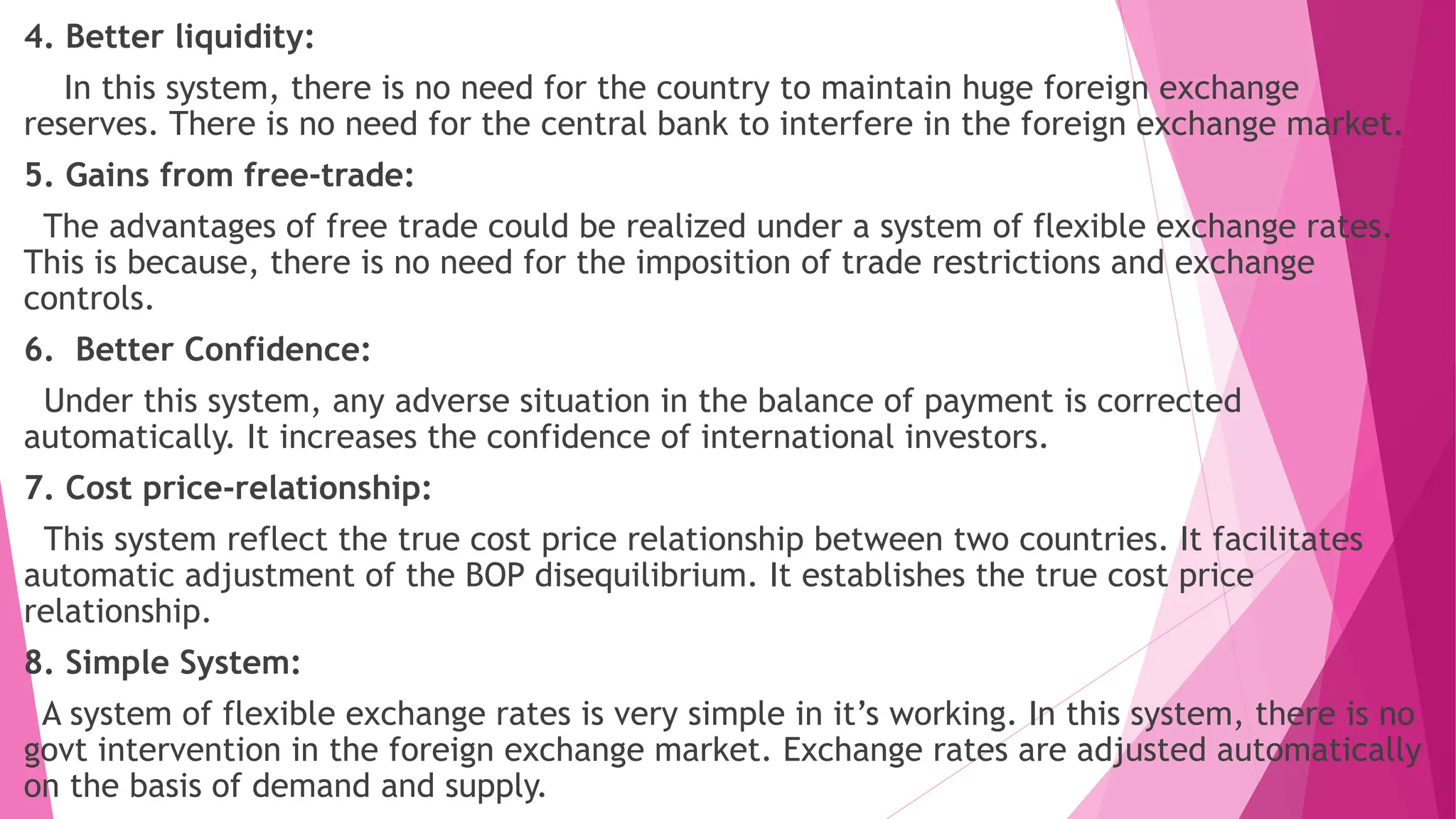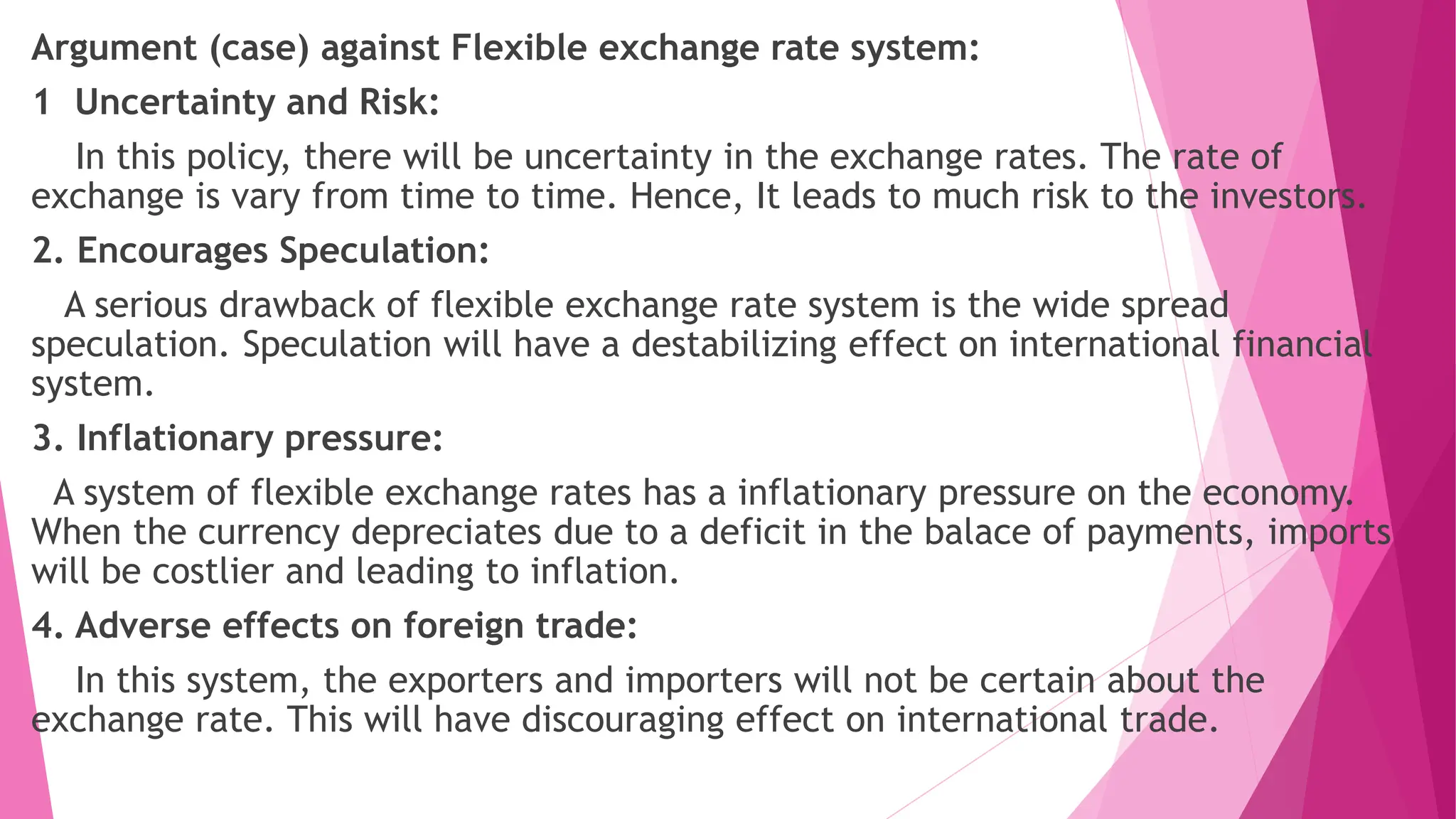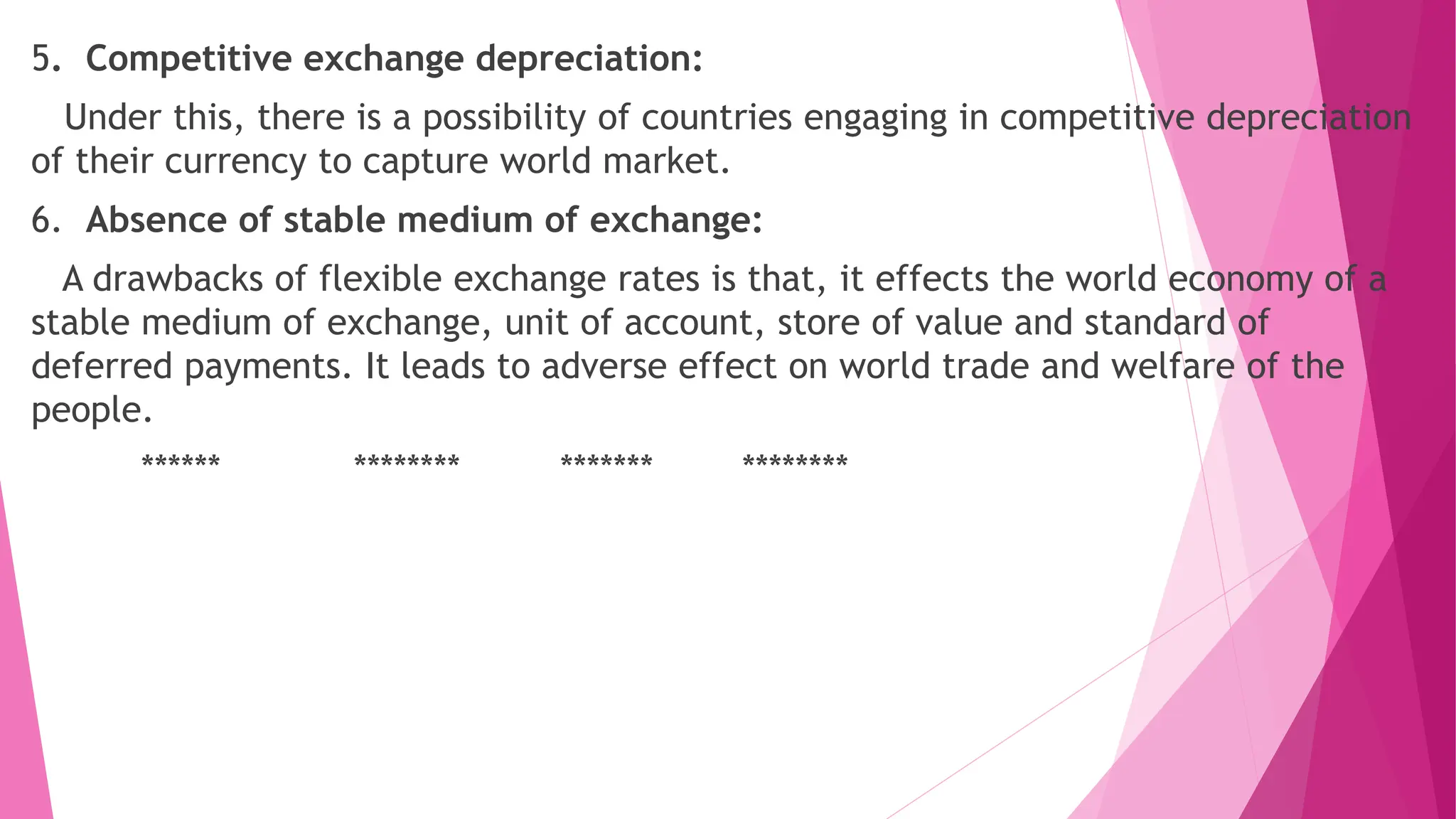The document discusses foreign exchange rates and several theories related to how exchange rates are determined. It provides the following key points:
1. Foreign exchange rates refer to the rate at which one country's currency can be converted into another's. The rate expresses the external purchasing power of a currency.
2. In foreign exchange markets, rates are determined by the supply and demand of currencies. Demand comes from imports, exports, and other cross-border transactions while supply comes from exports, investments, and remittances.
3. Equilibrium exchange rates occur when supply and demand are equal. Changes in supply or demand can cause fluctuations in the exchange rate.
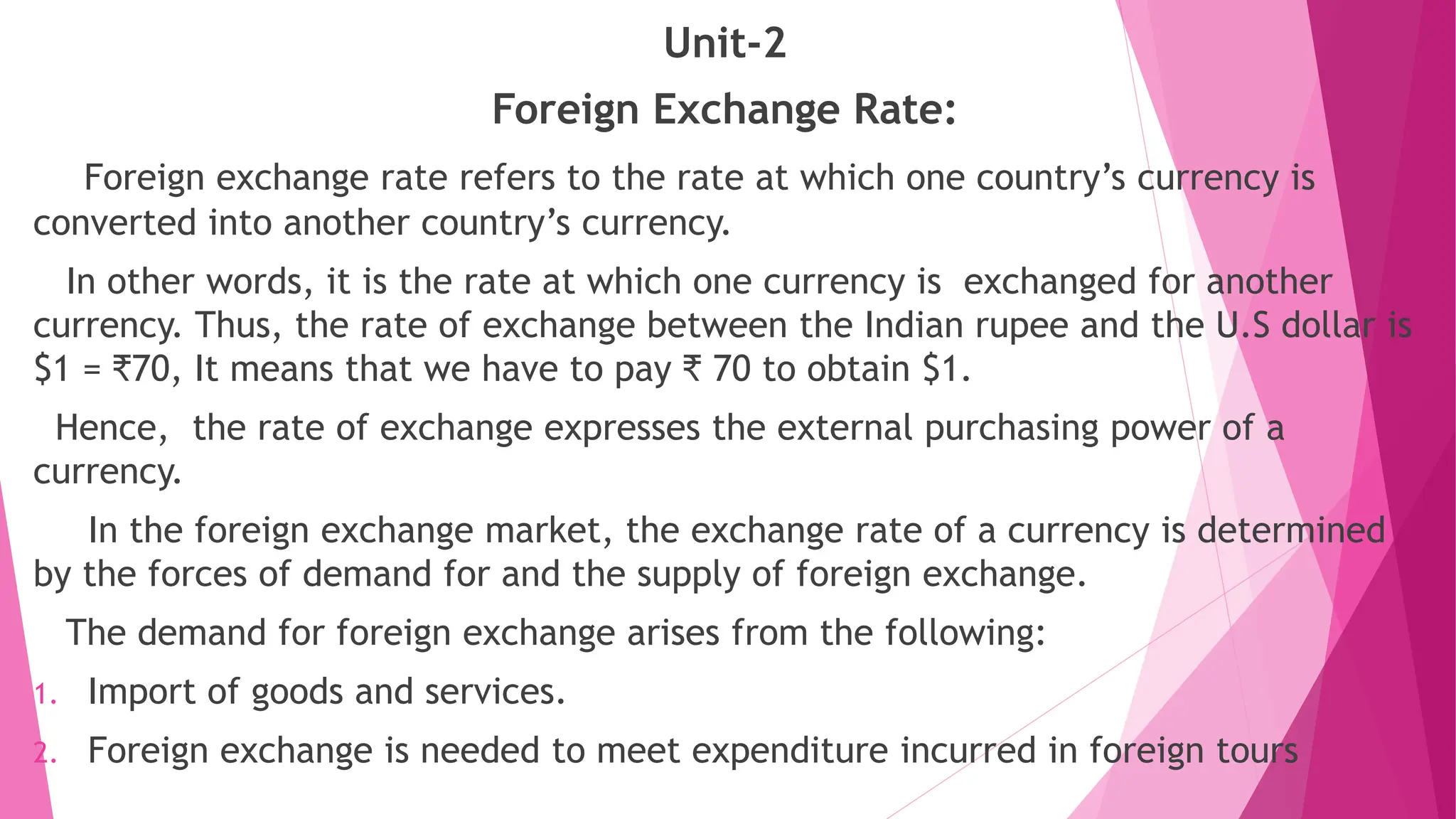
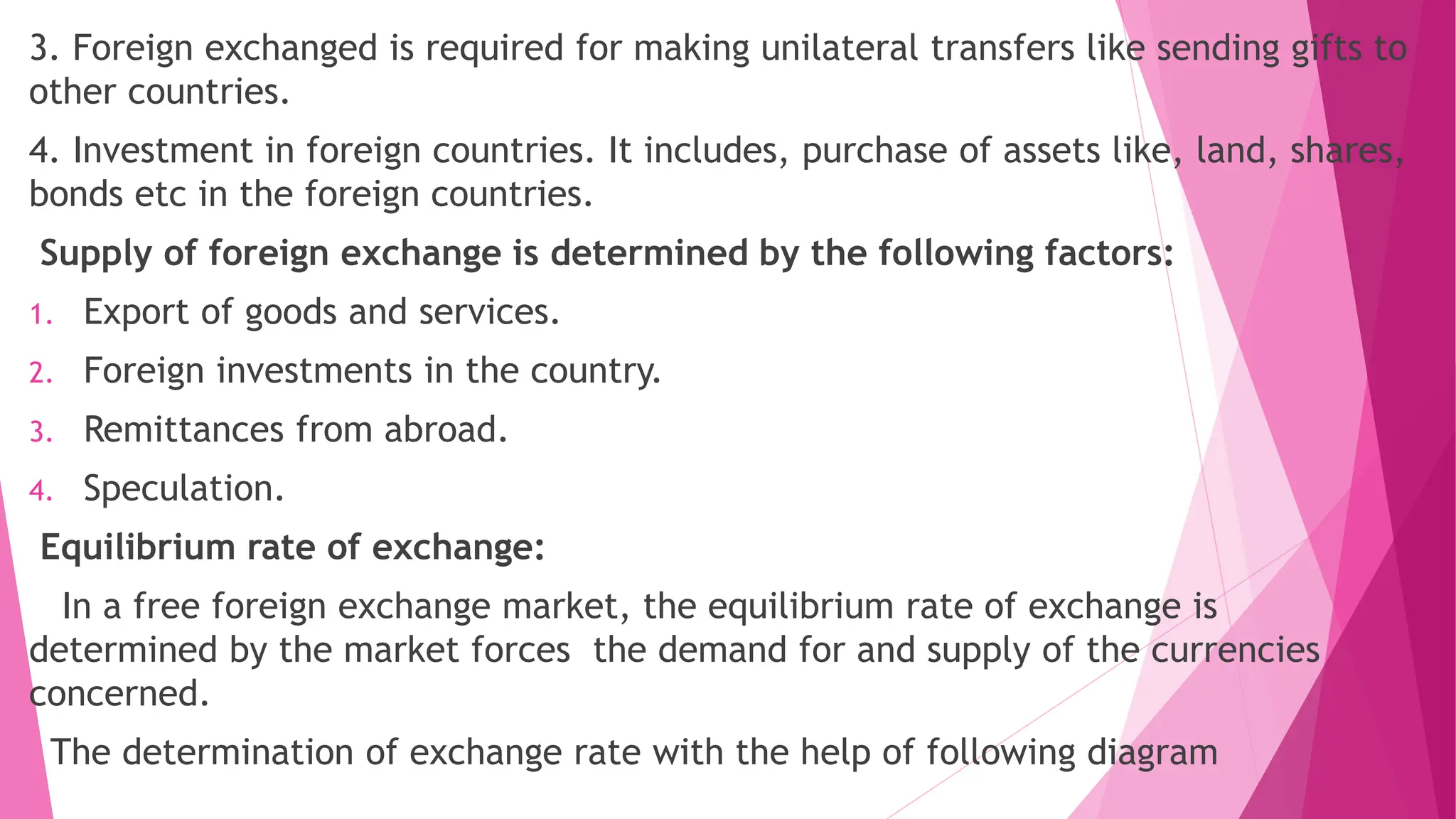
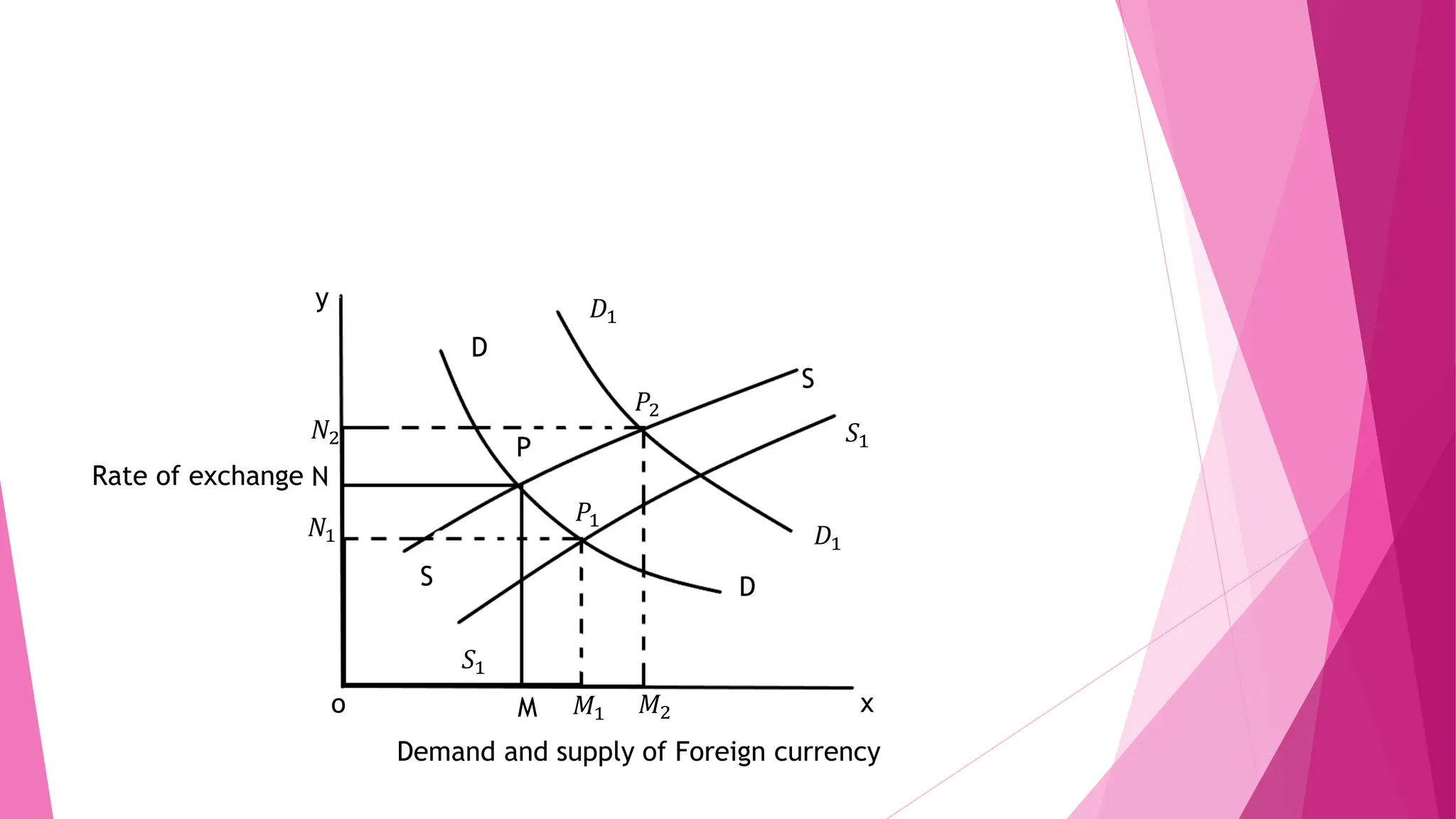
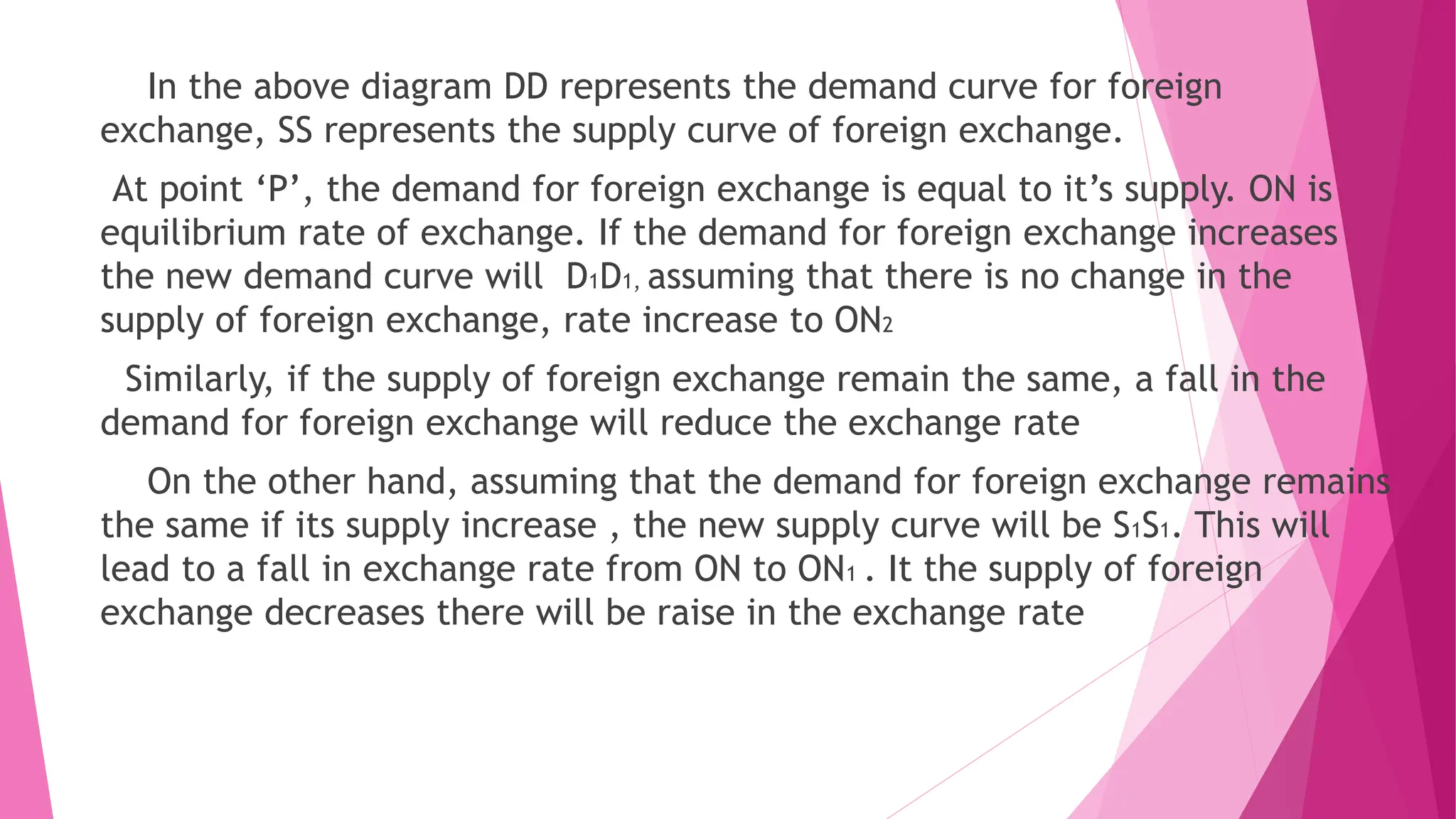
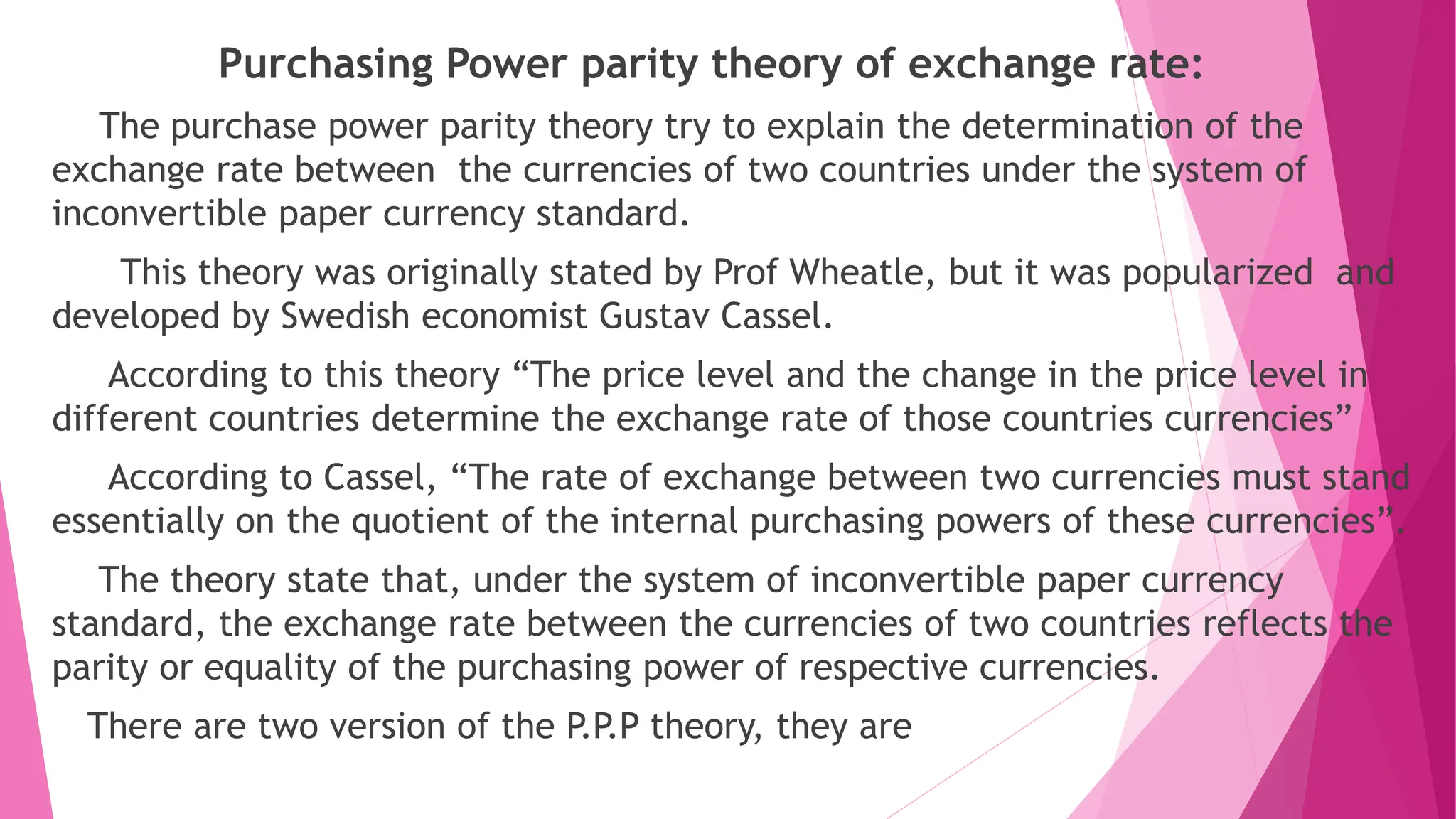
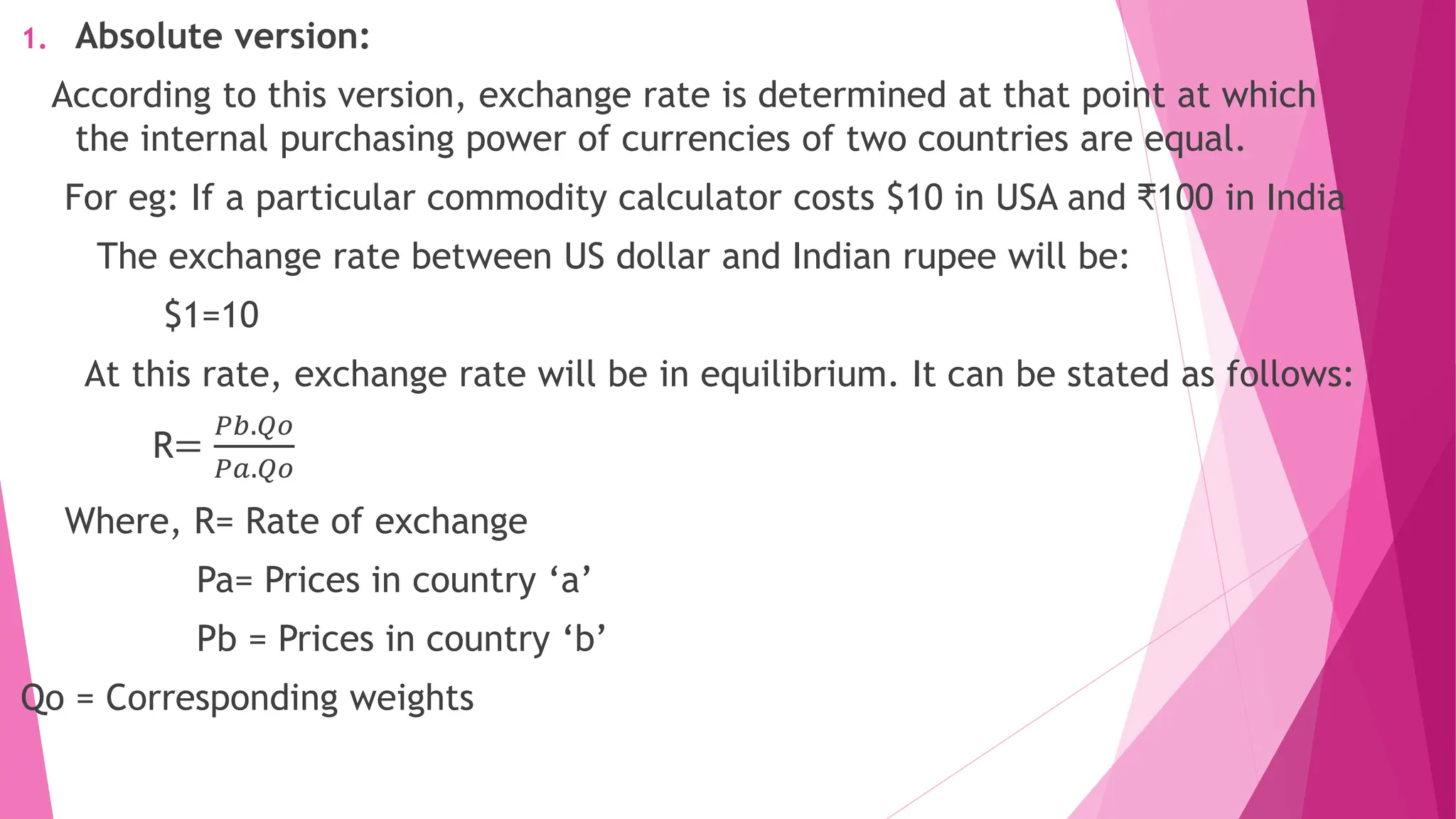


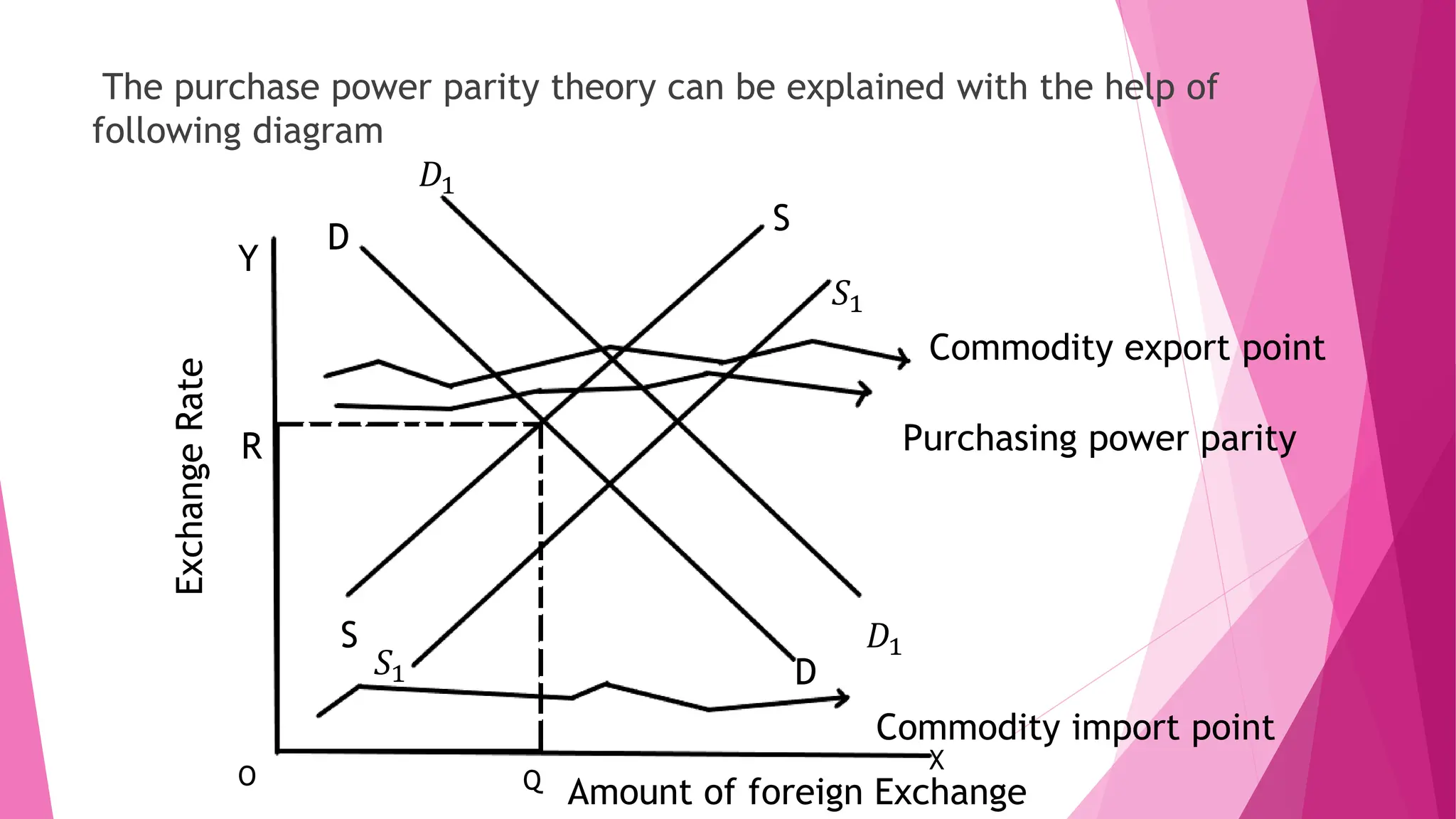
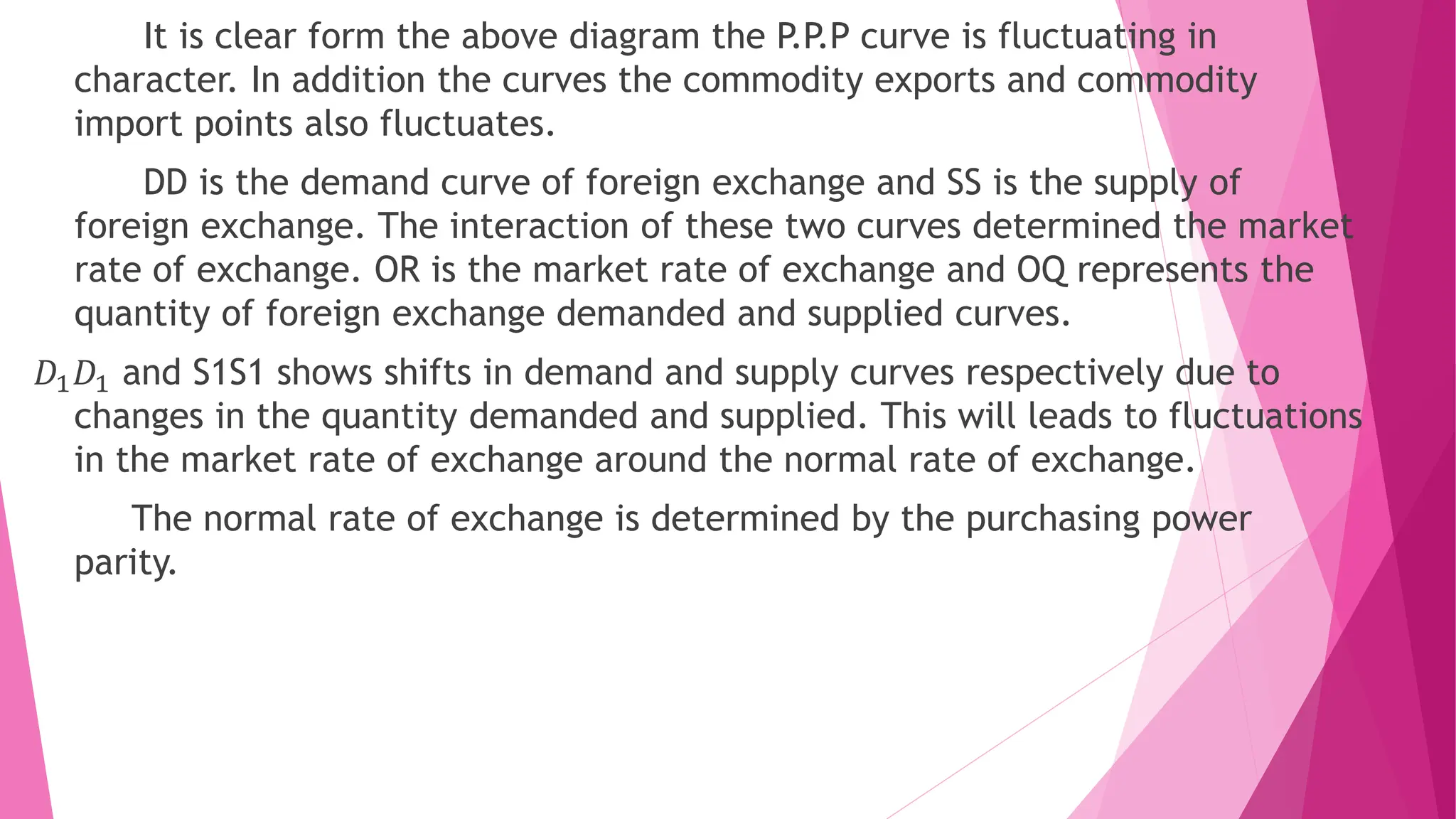
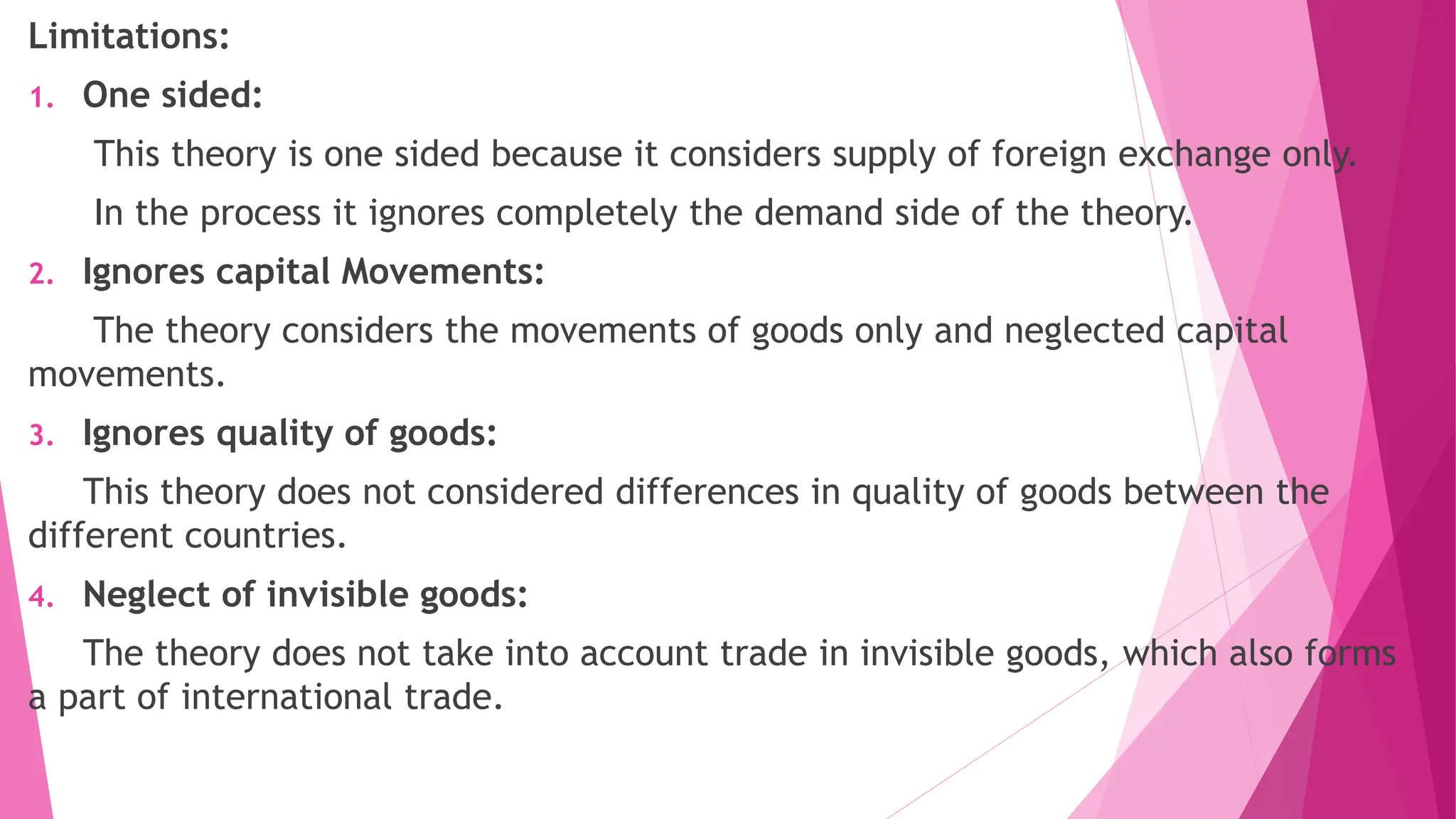
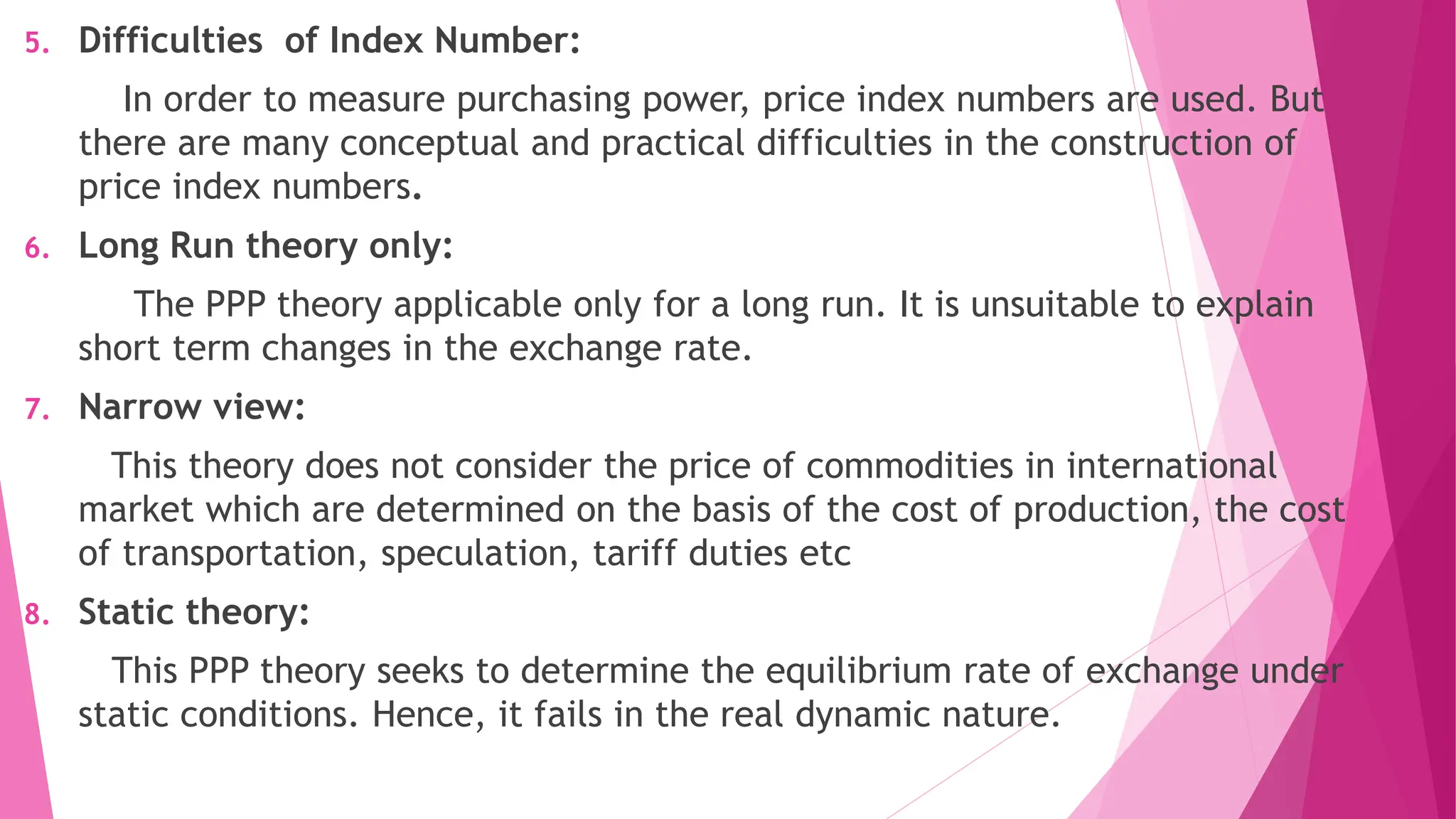

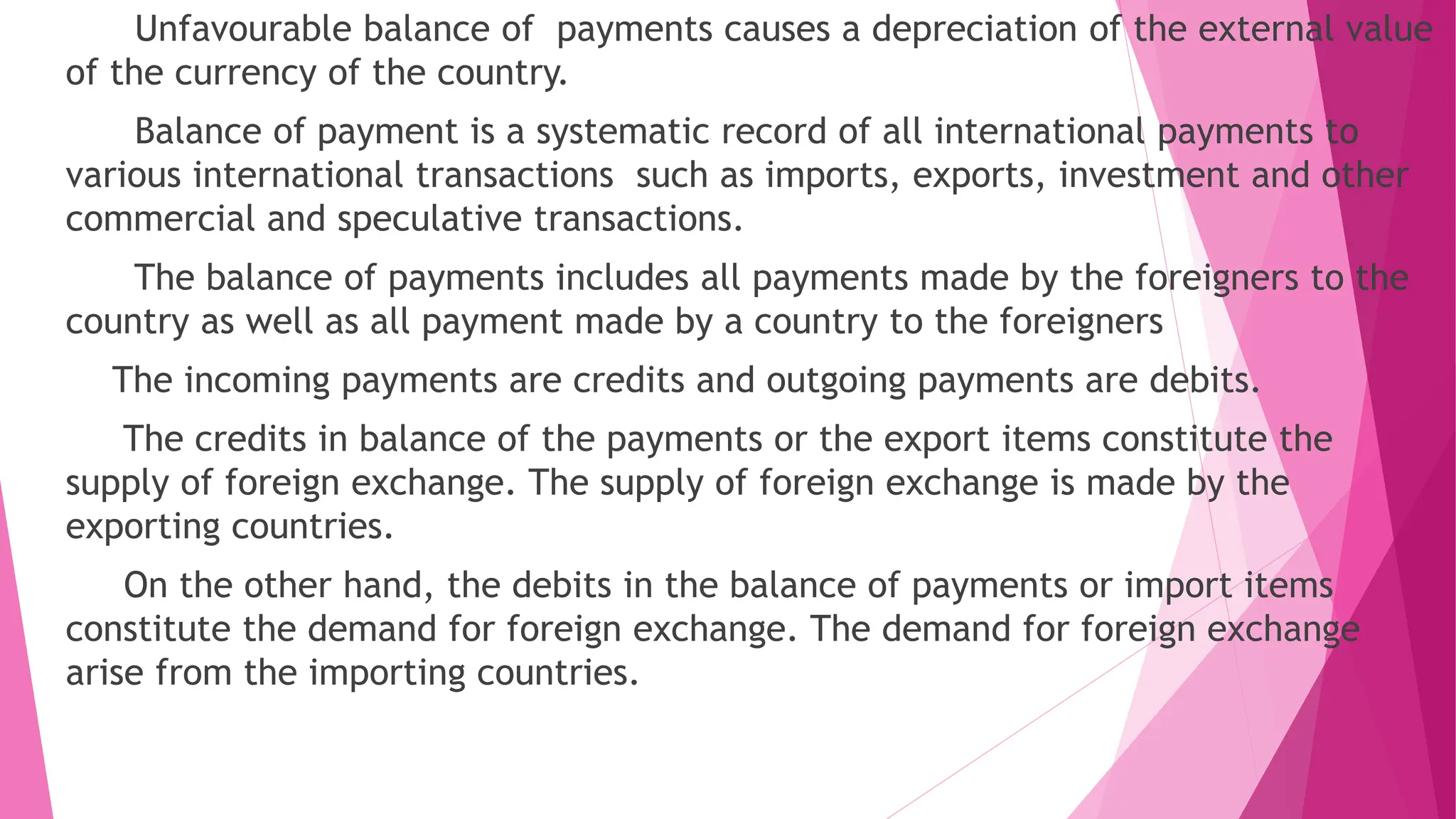

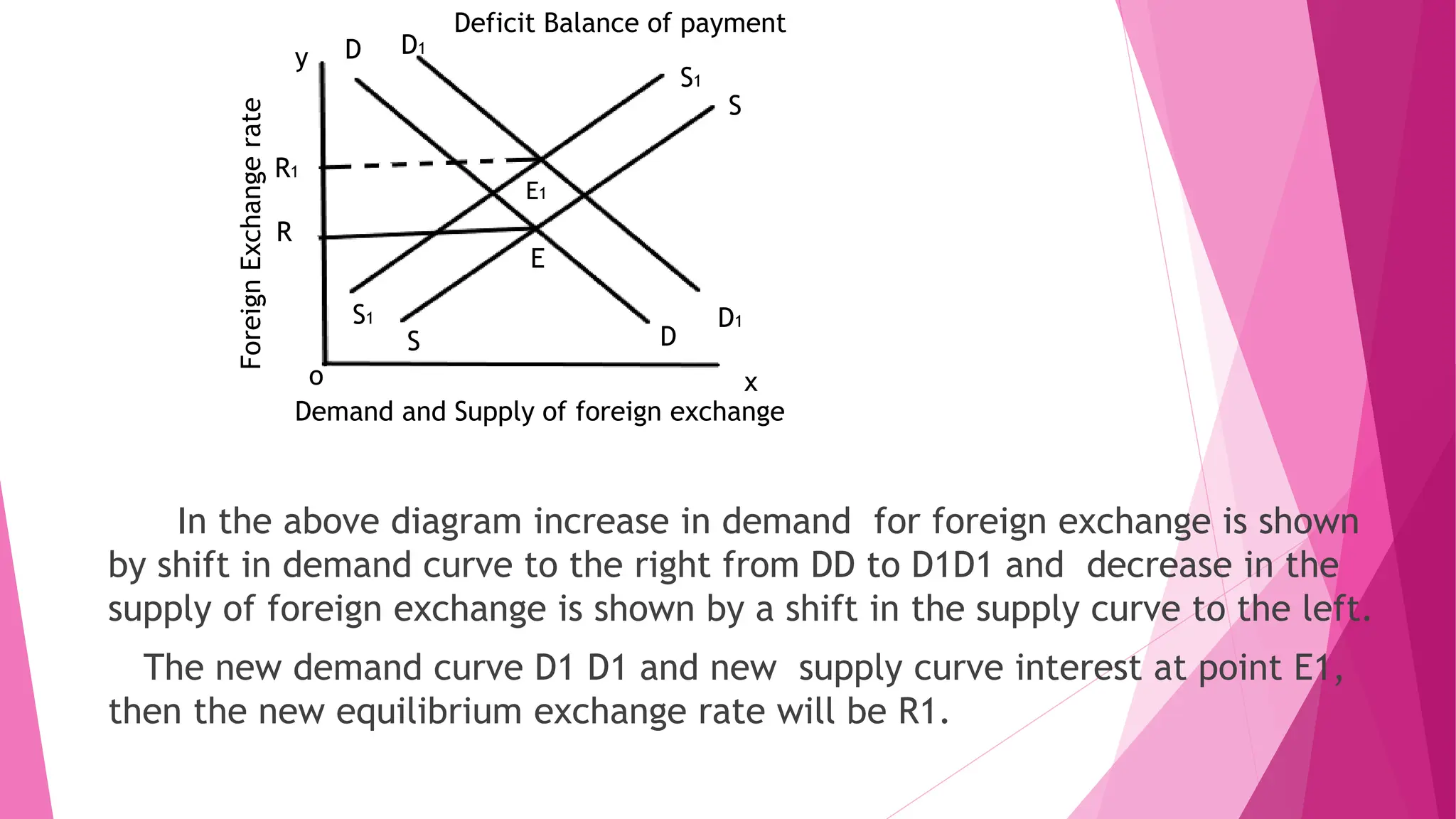
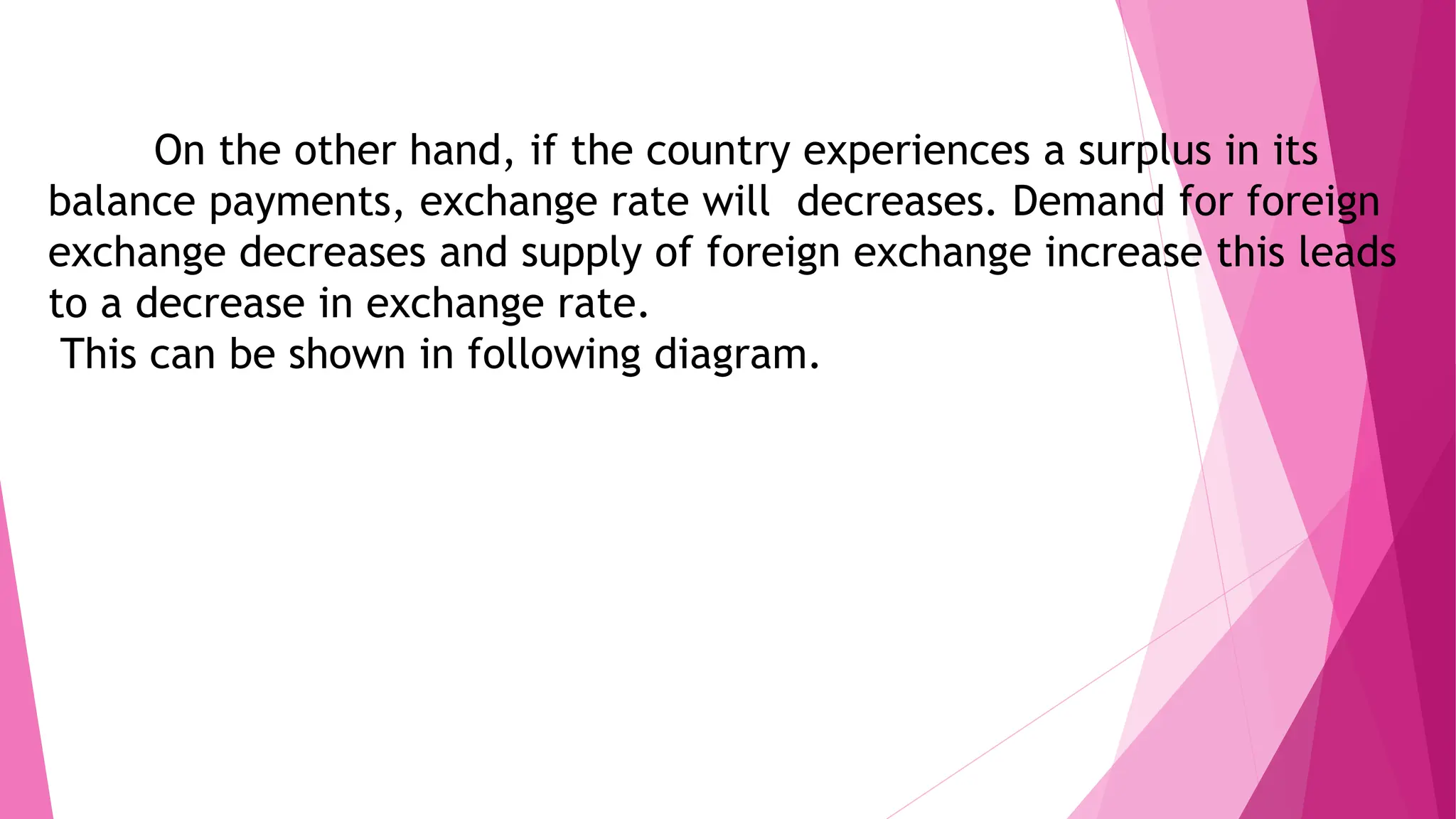
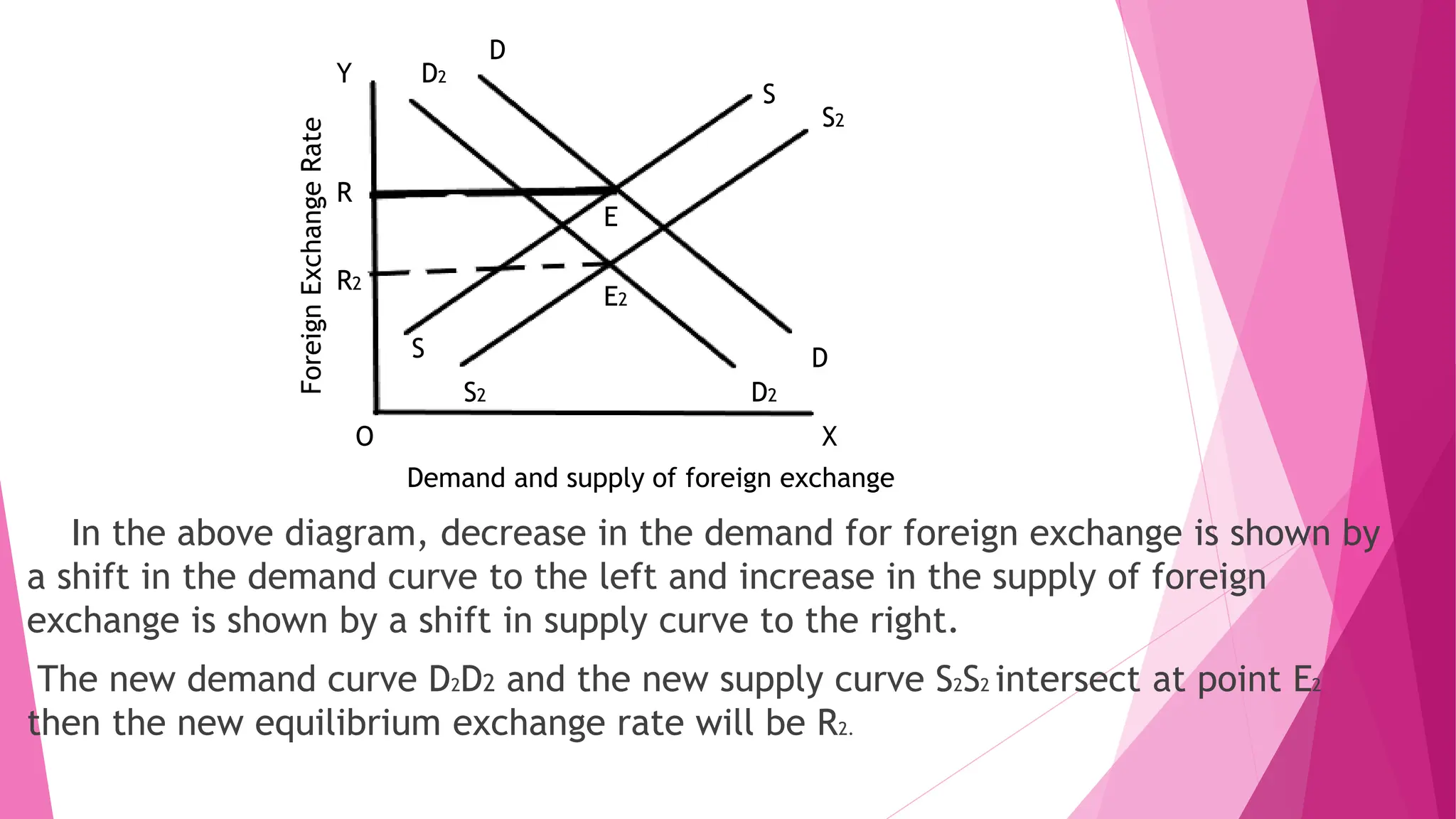
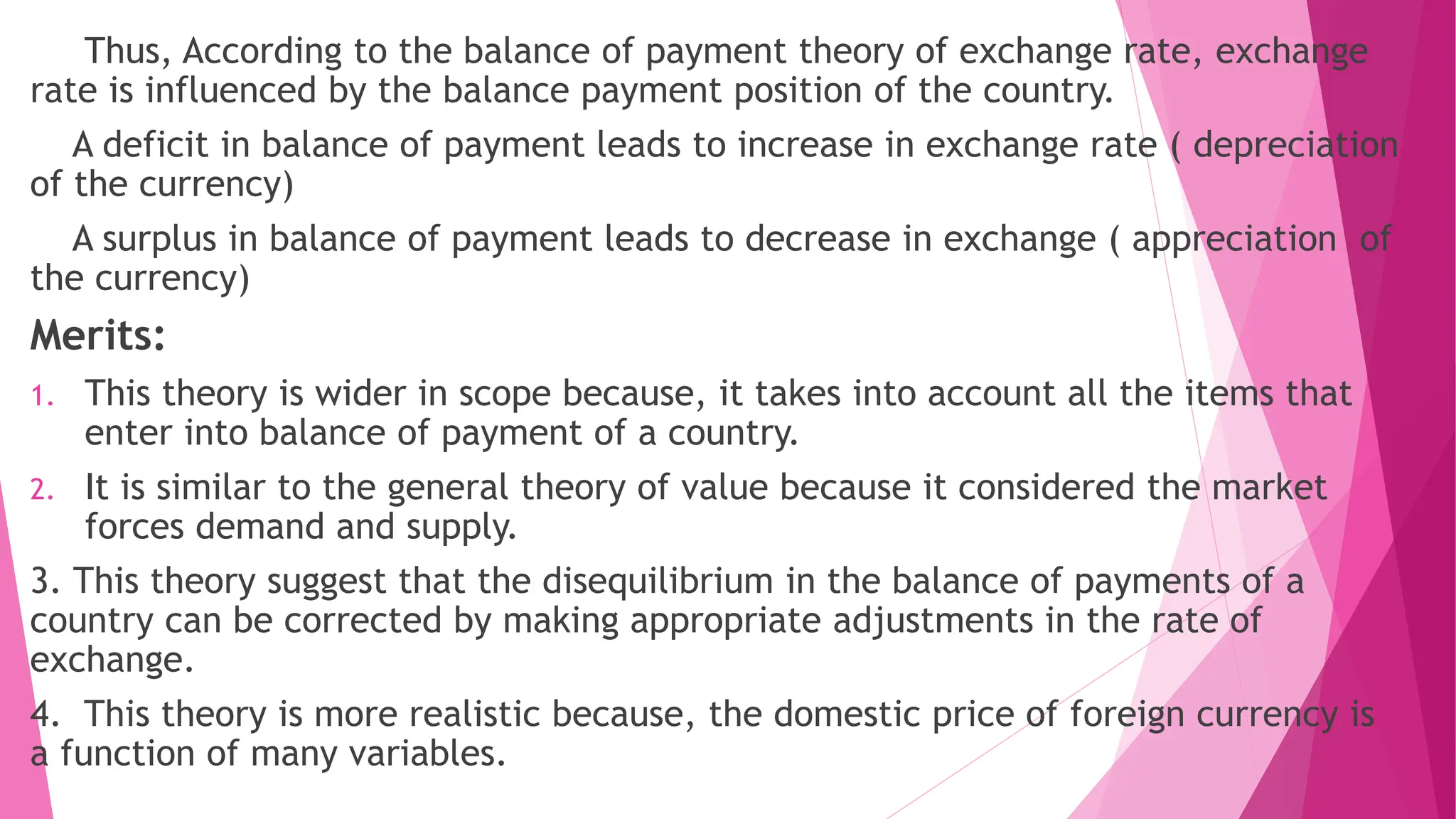
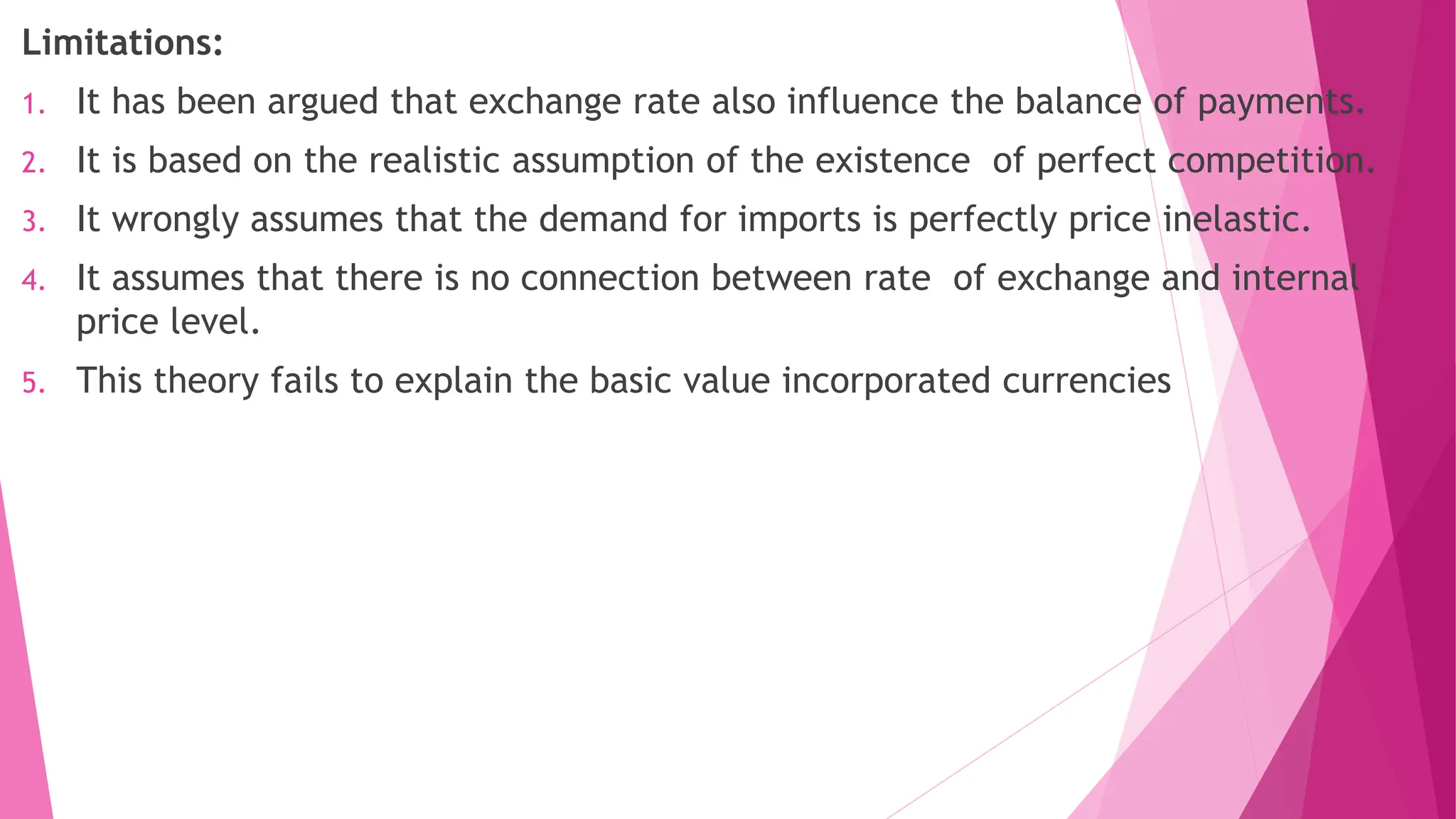
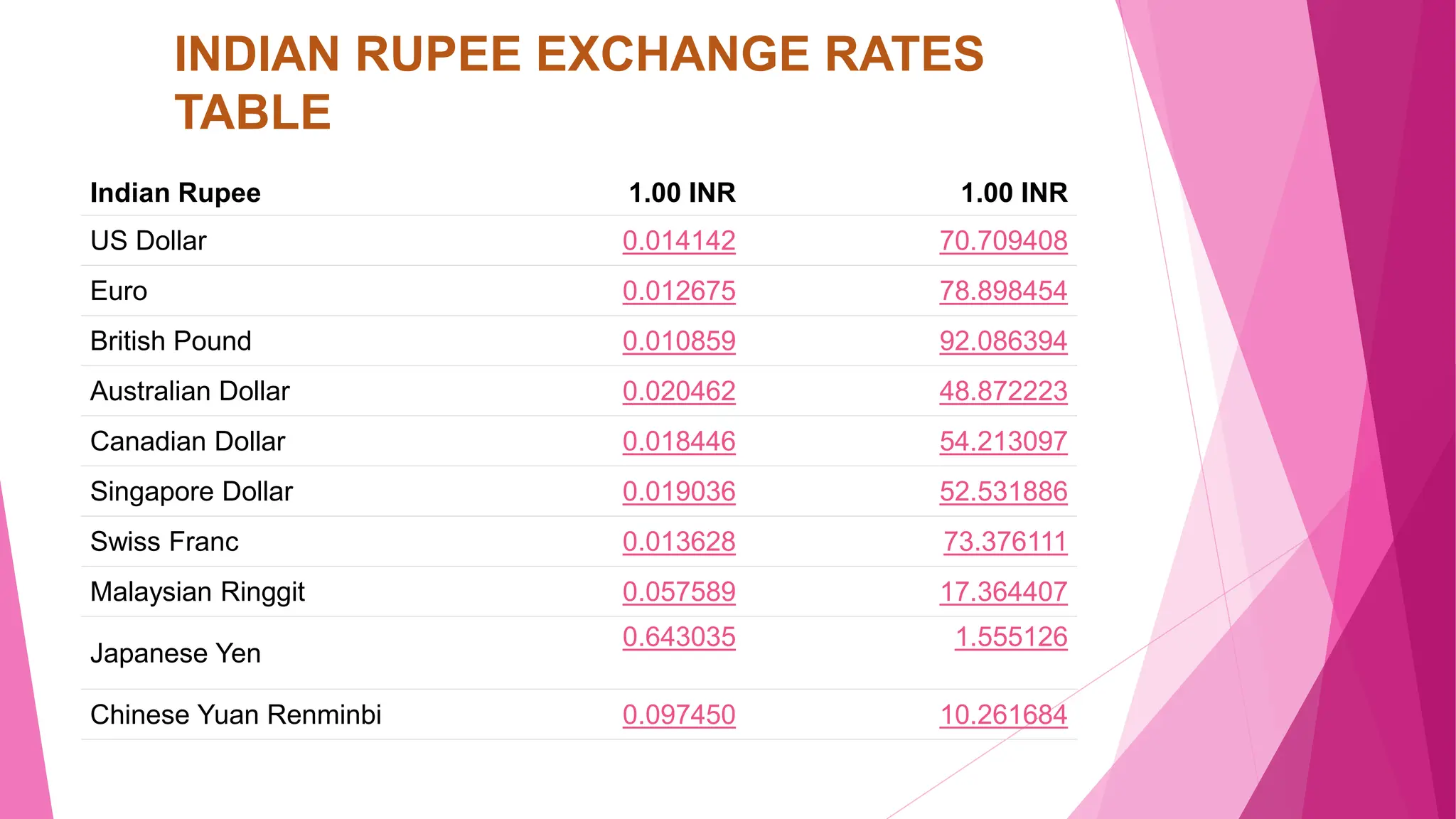

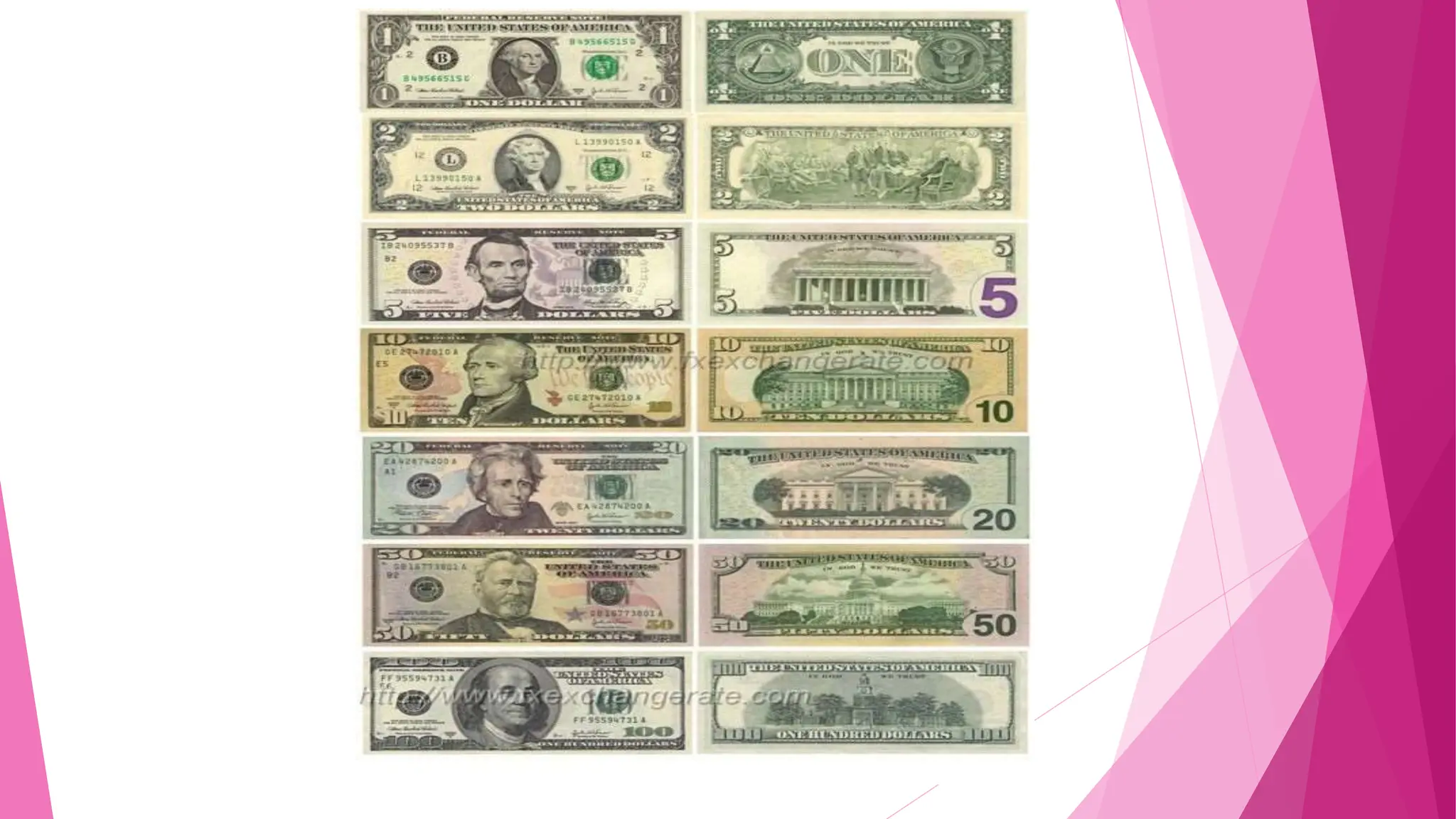
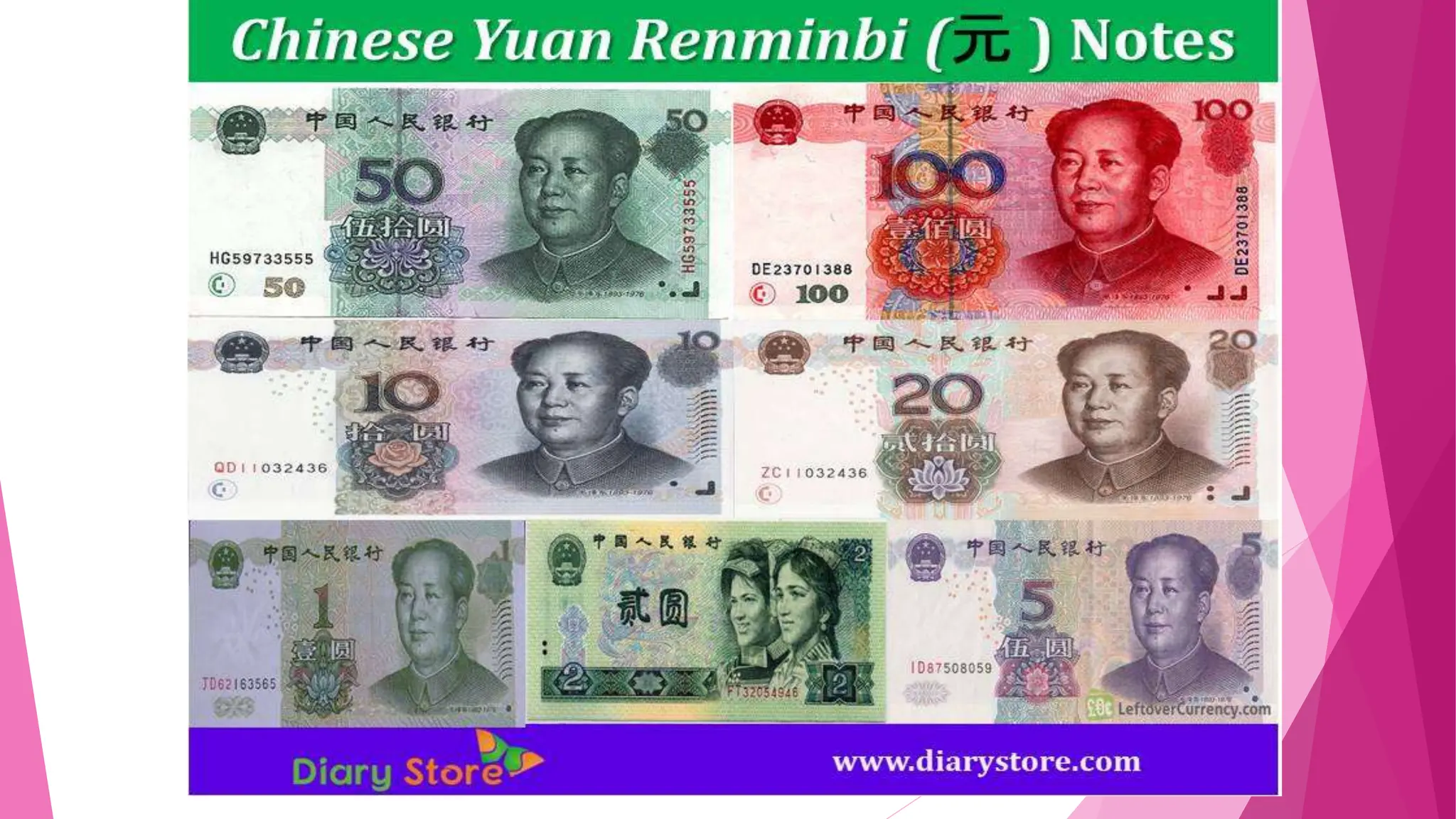

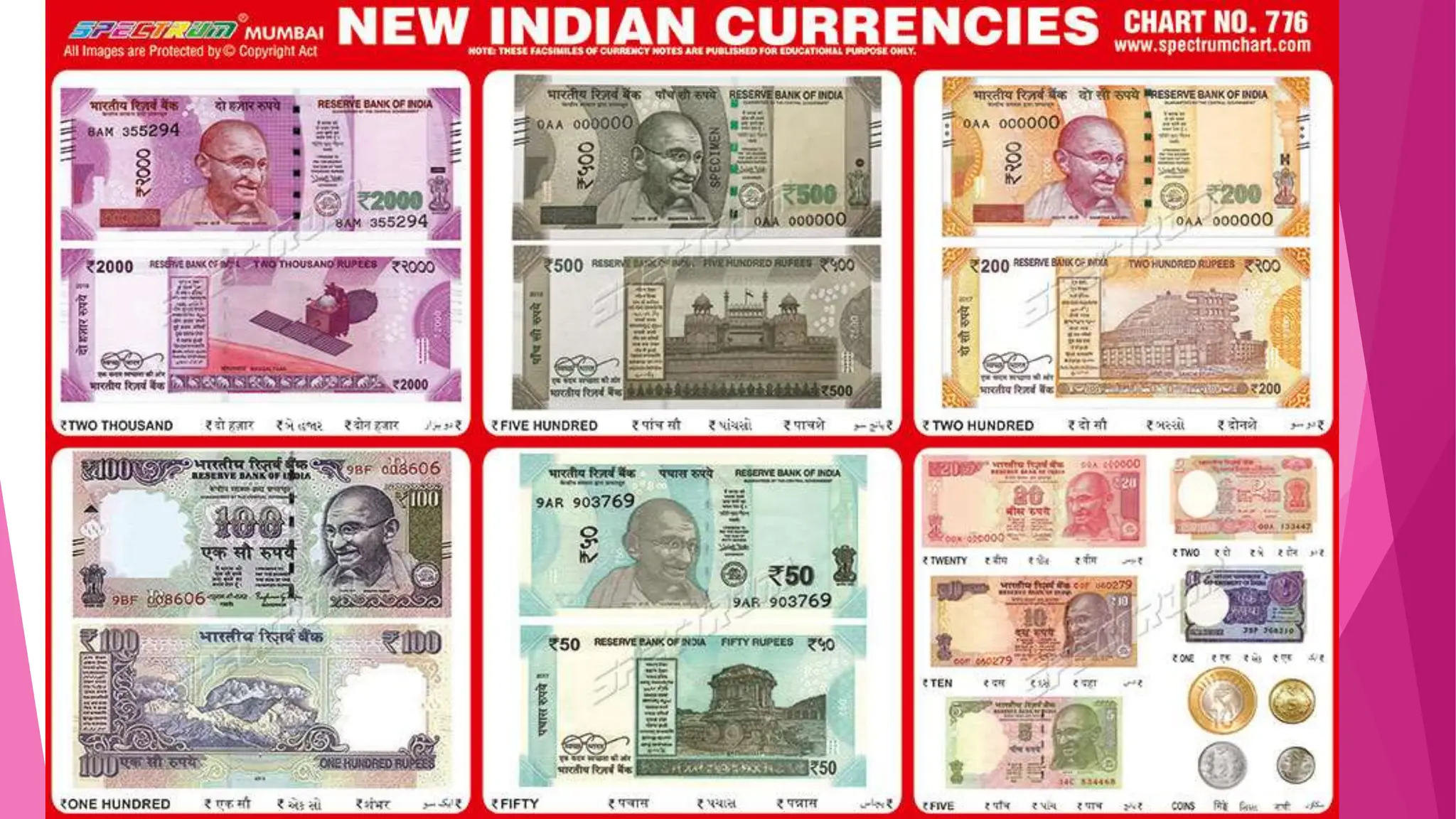

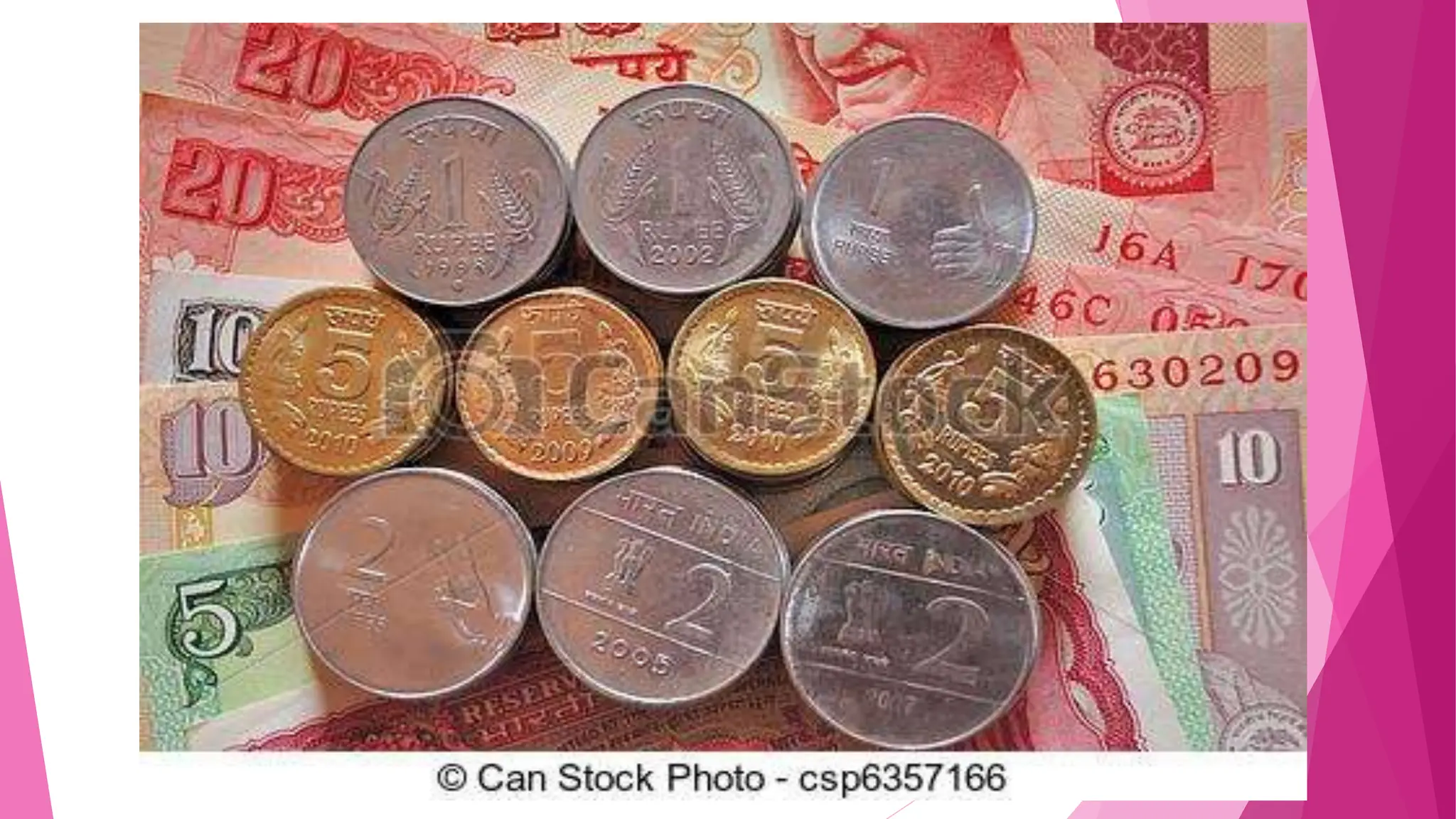
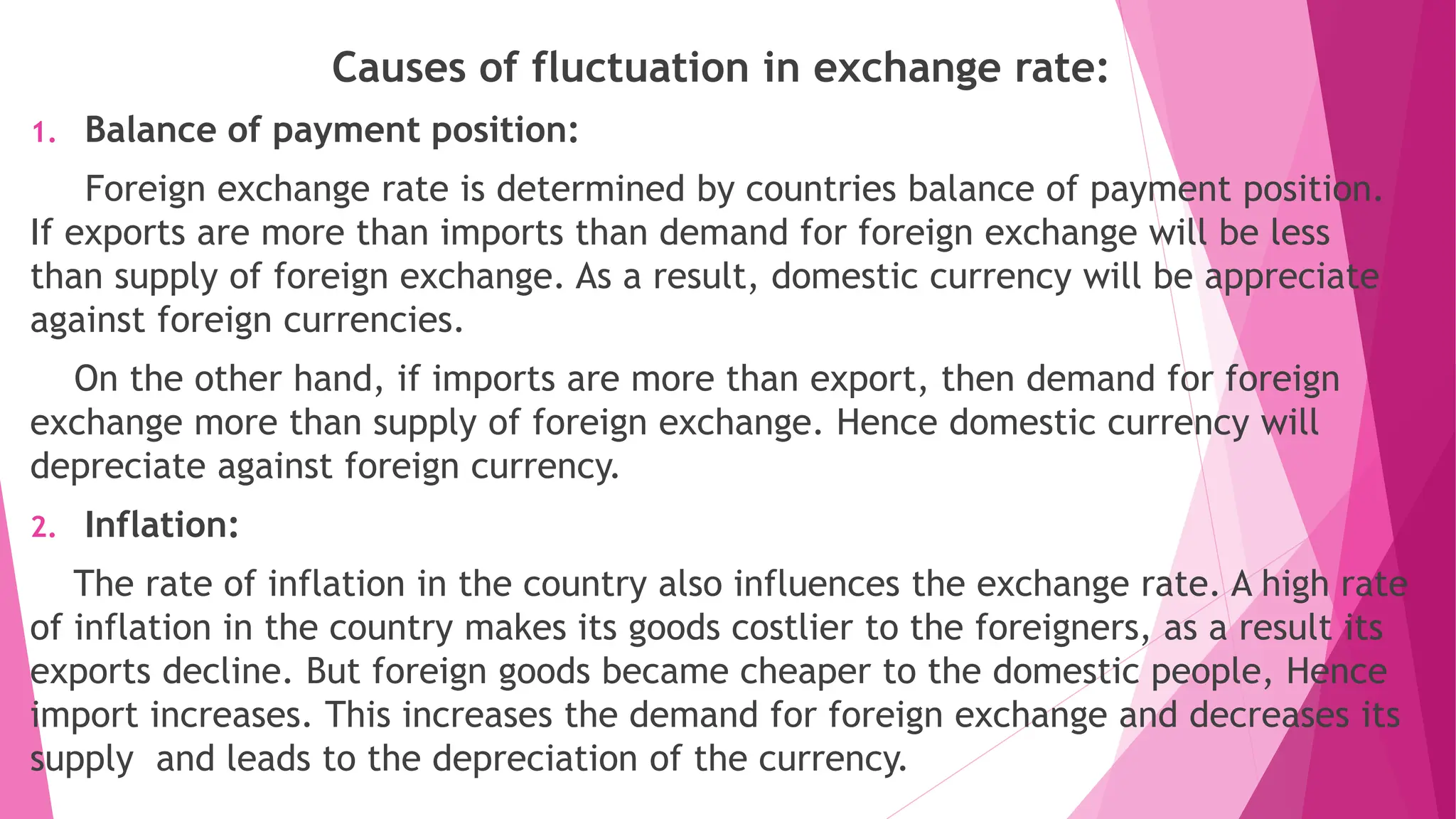

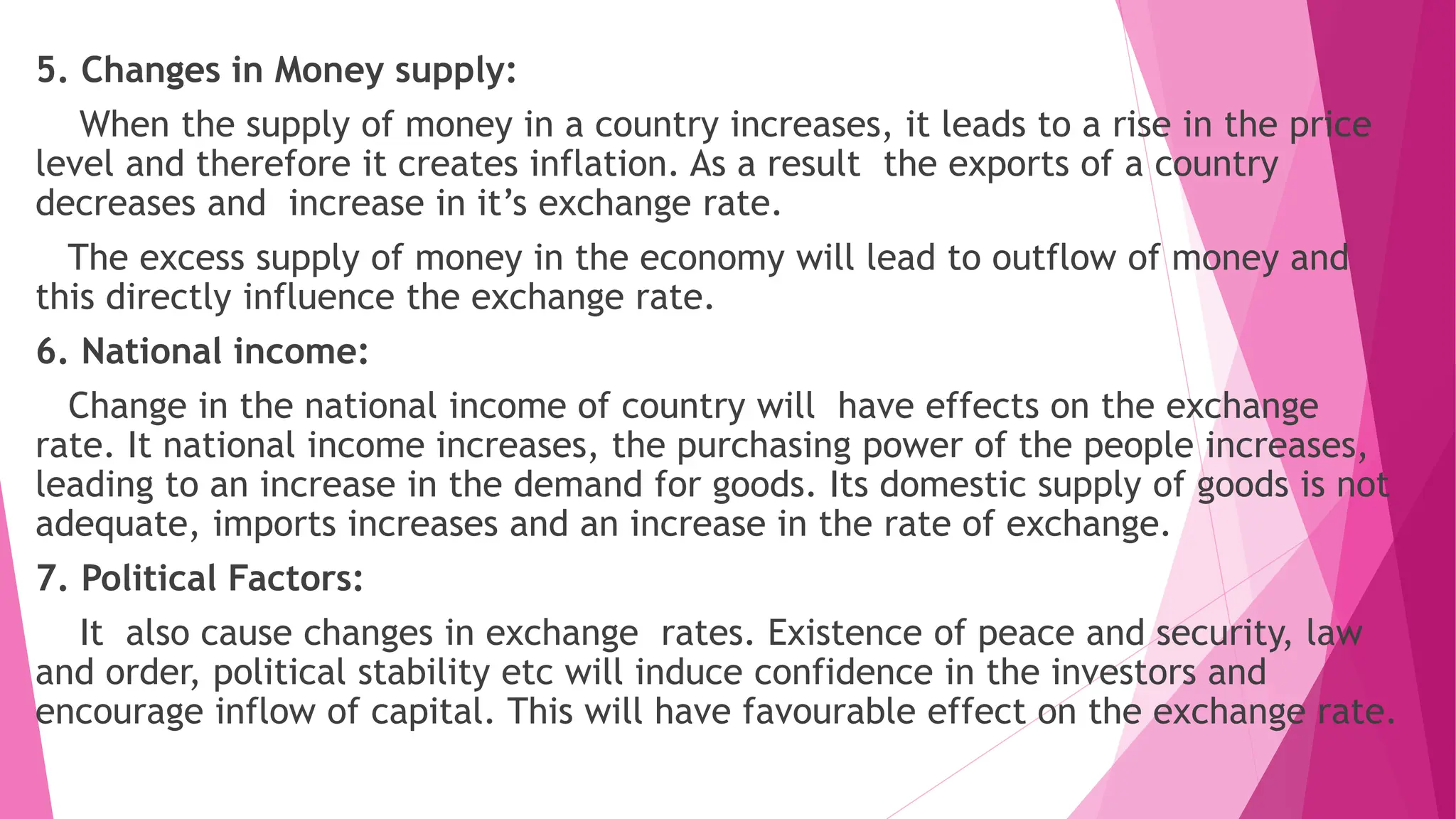
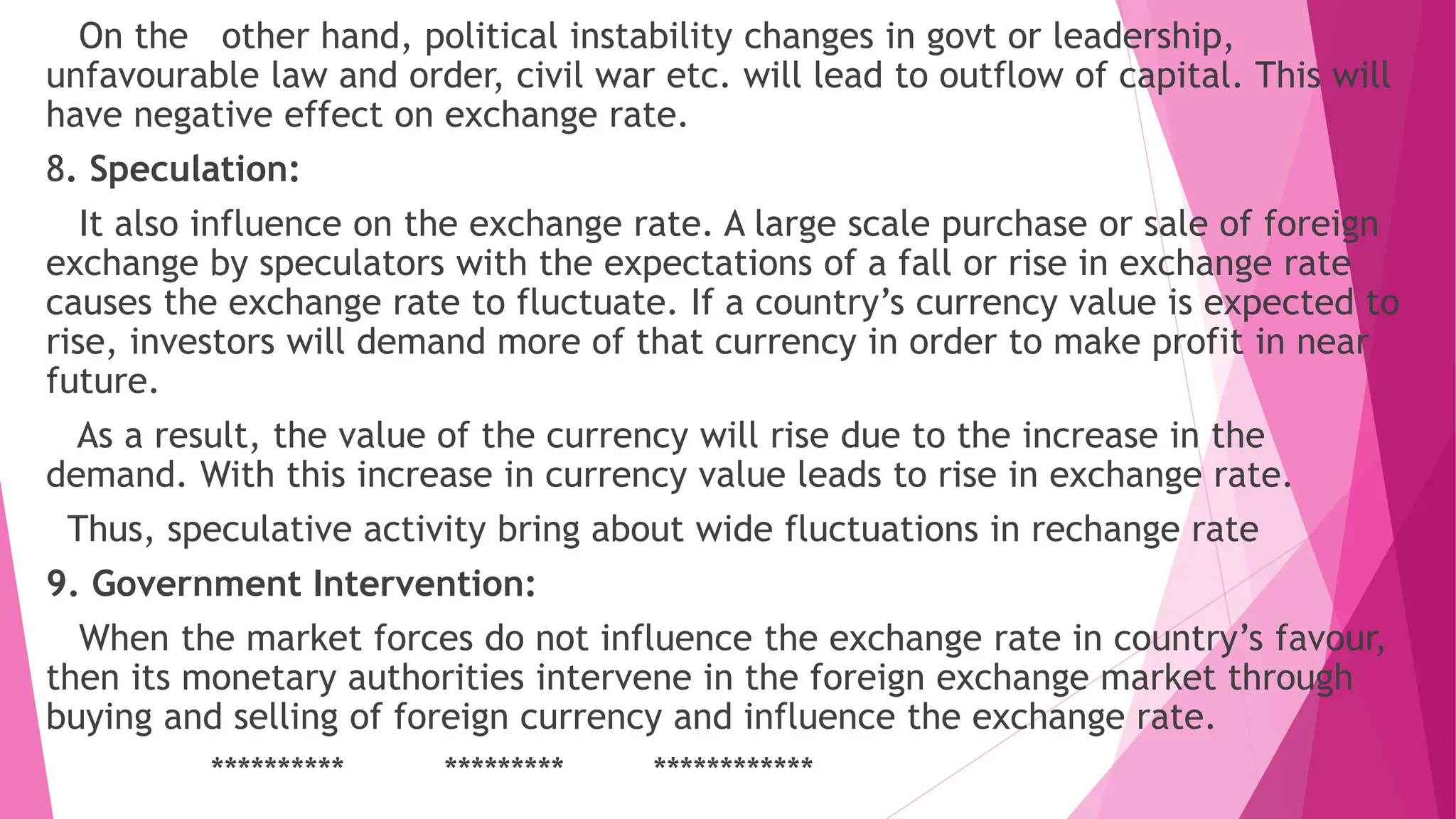

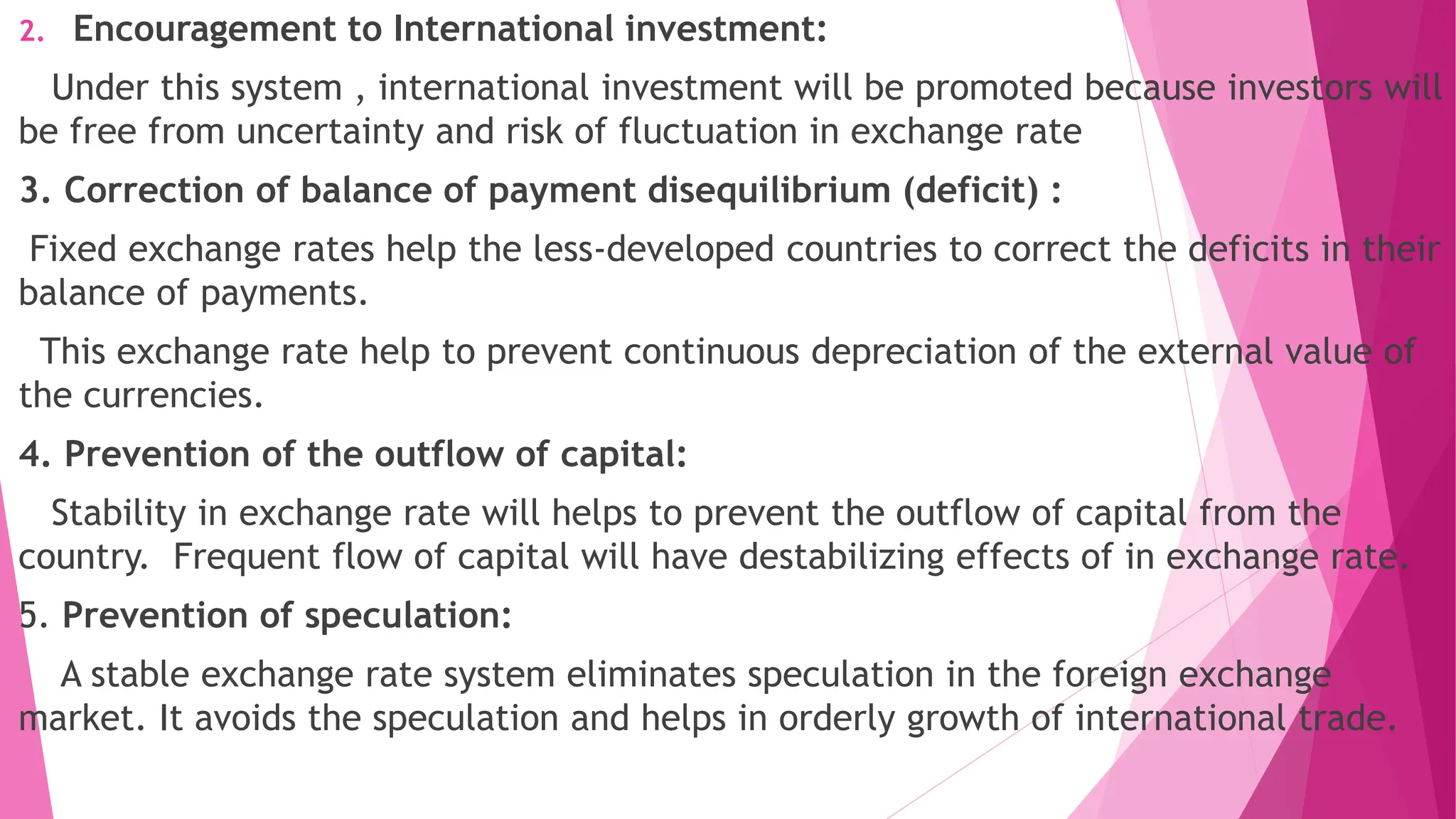
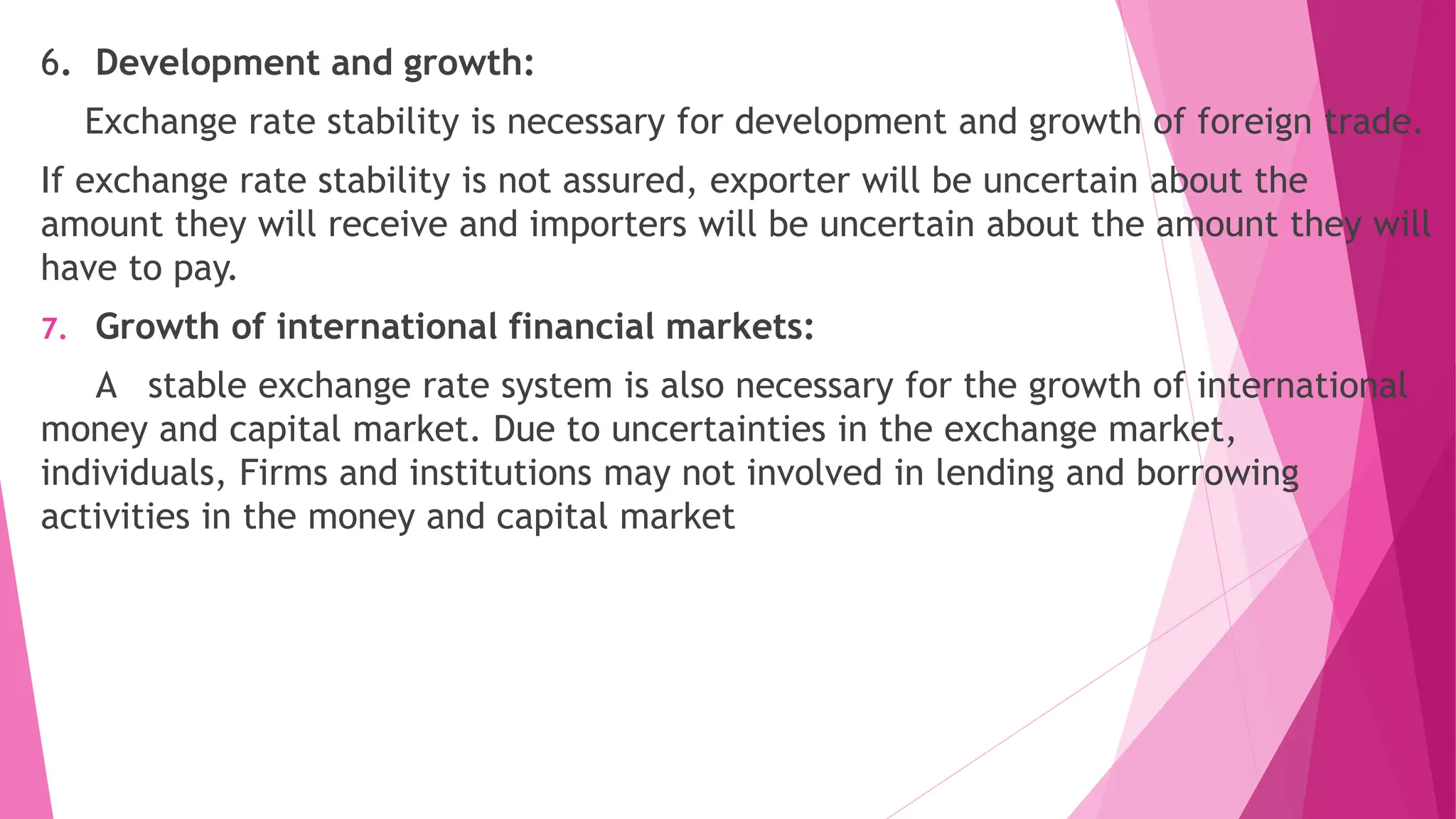
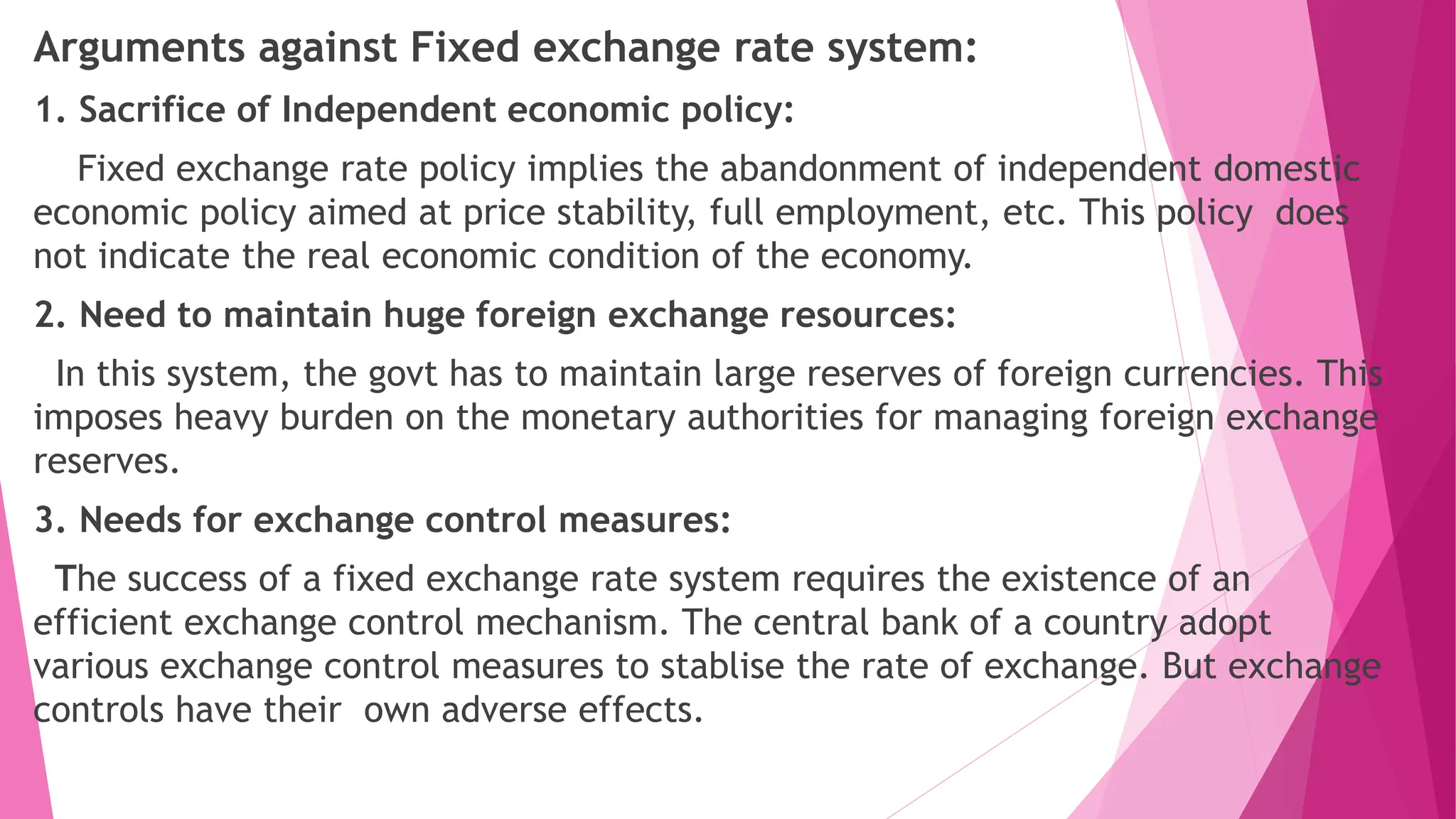
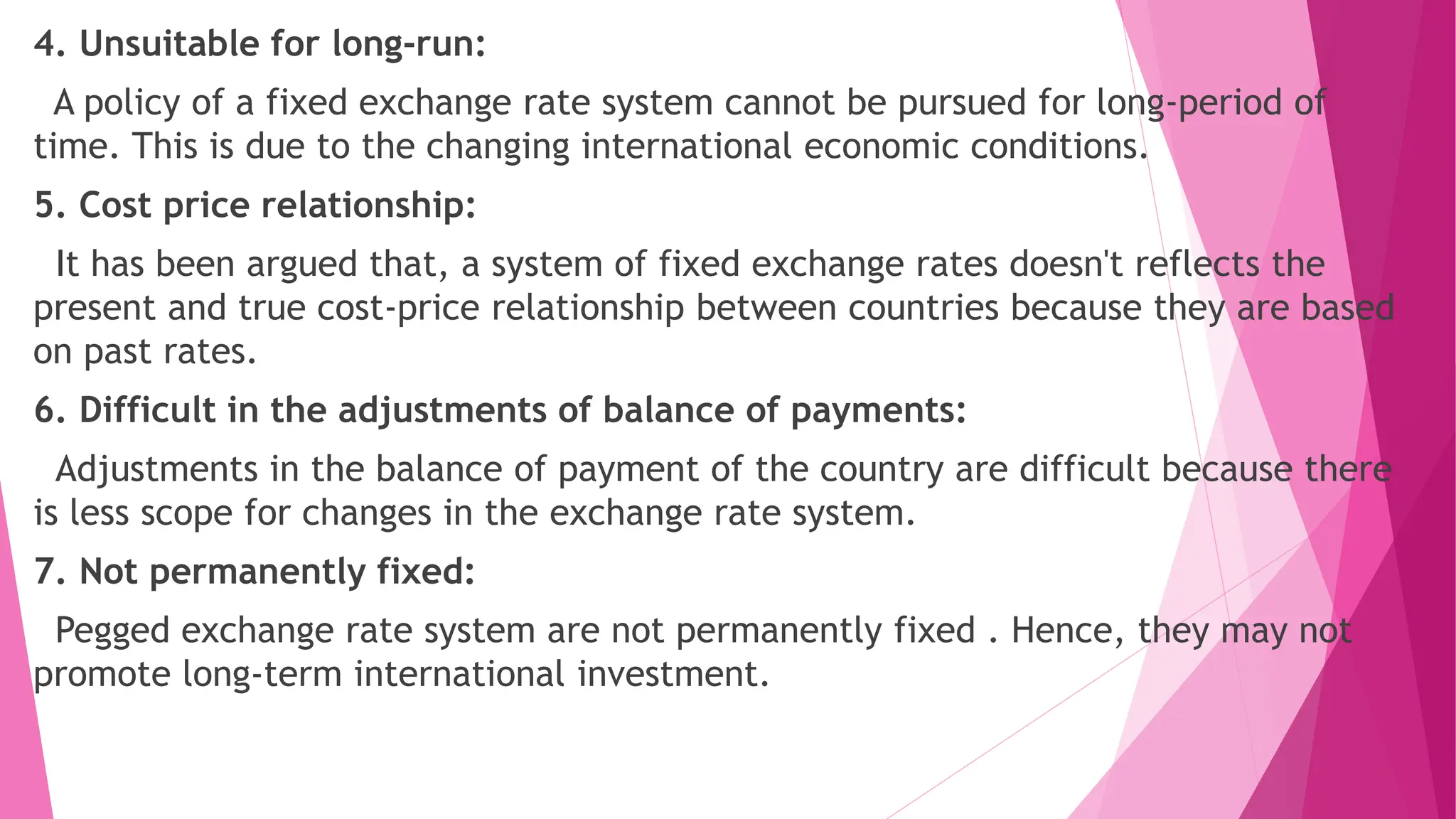
![Flexible exchange rate system: [Floating Exchange rate system]
Under this system, exchange rates are freely determined in open foreign
exchange market on the basis of the interaction of the market forces the demand
for and supply of foreign exchange.
In this system, exchange rates are determined on the basis of balance of payment
position.
A surplus in the balance of payment will create an excess demand for the
country’s currencies and exchange rate will tend to raise.
On the other hand, a deficit in the balance of the payments, will create excess
supply of the country’s currency and the exchange rate will tend to decrease.](https://image.slidesharecdn.com/itfunit-2-240411131850-29b44e27/75/Foreign-Exchange-Rate-System-notes-pptx-38-2048.jpg)

